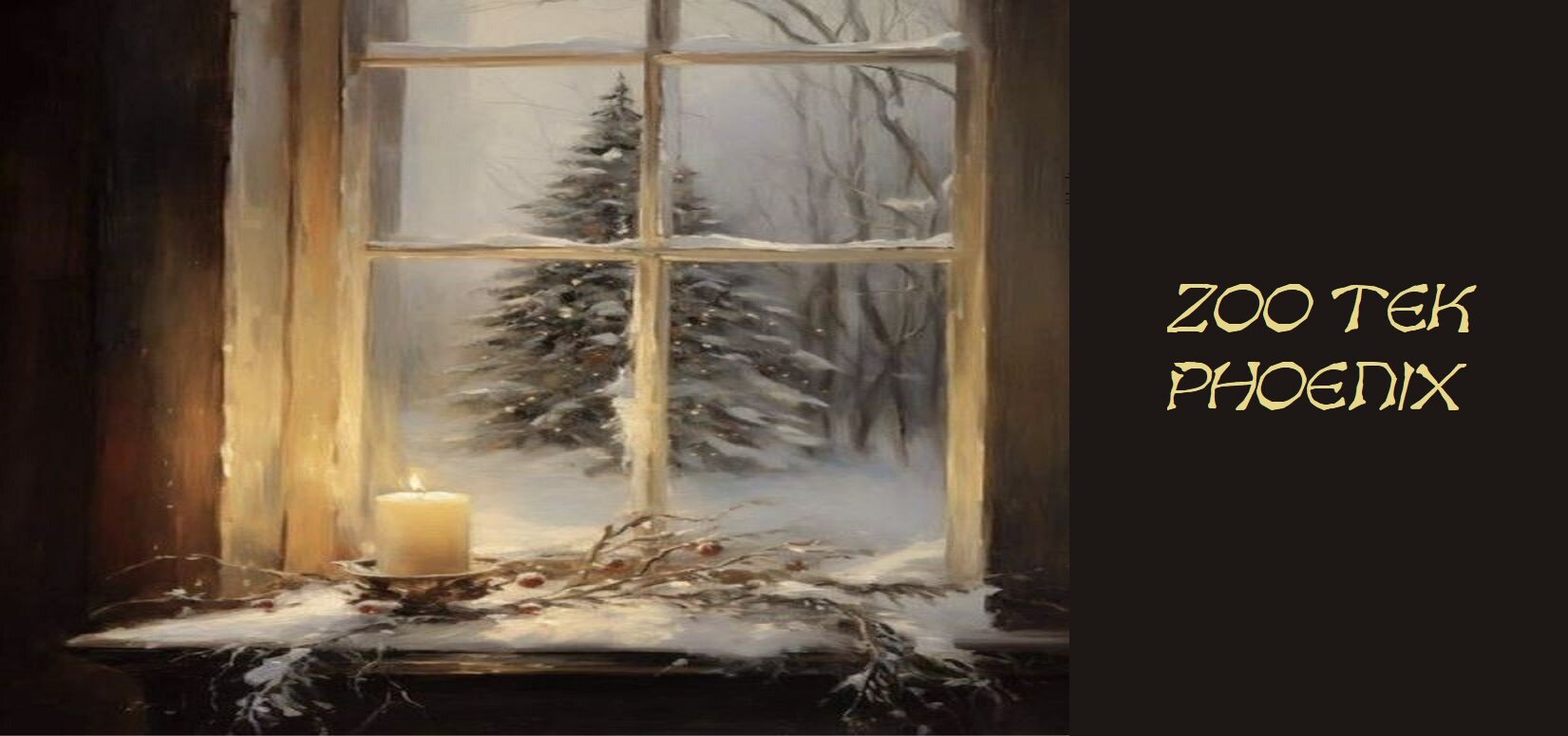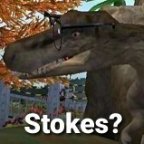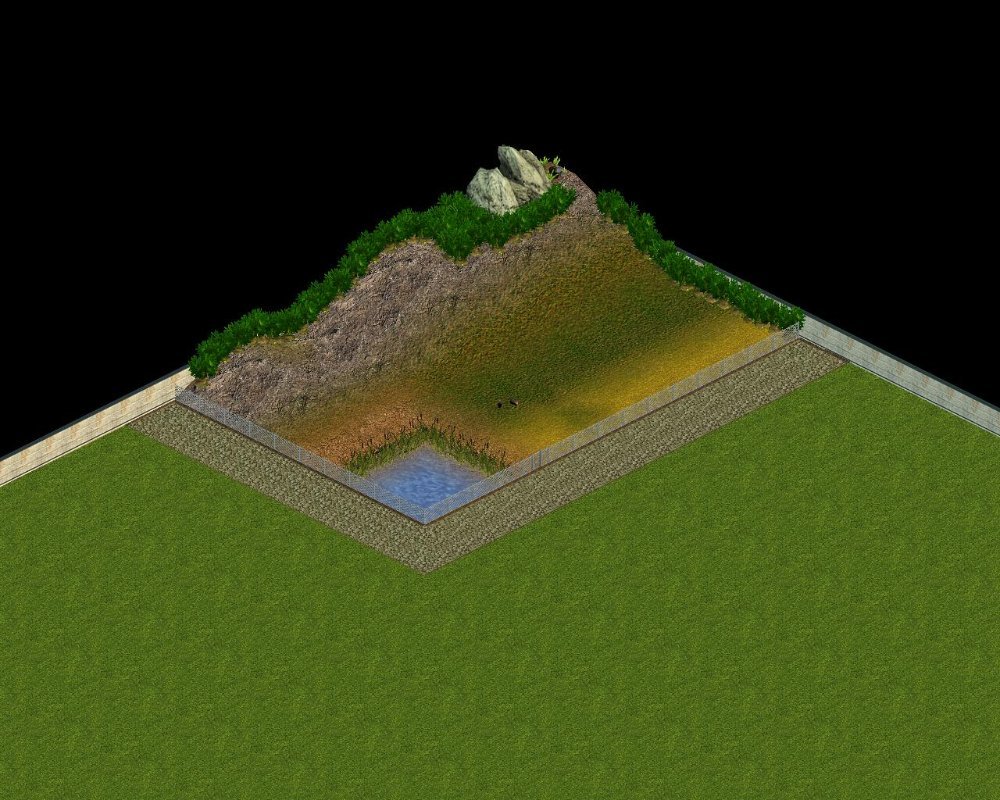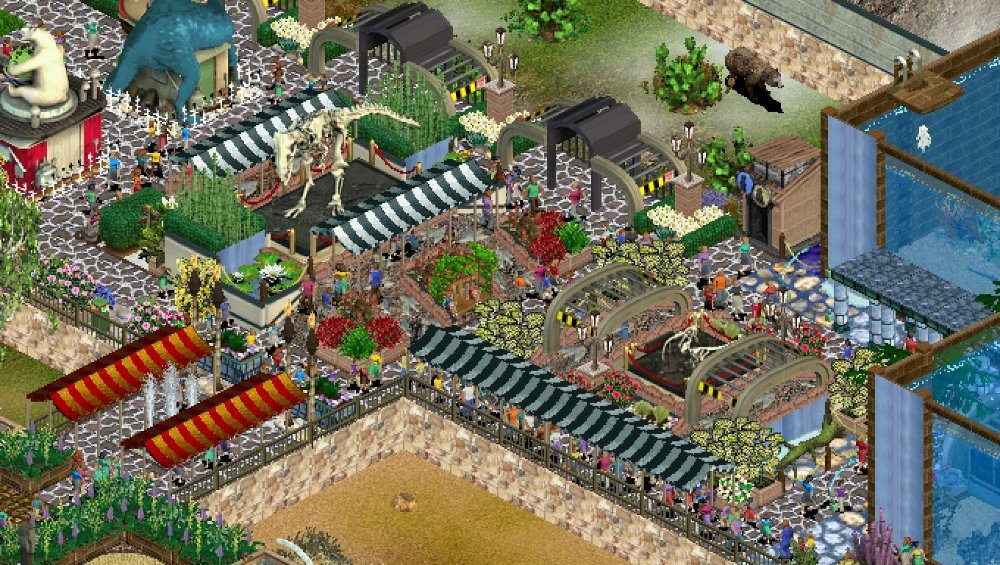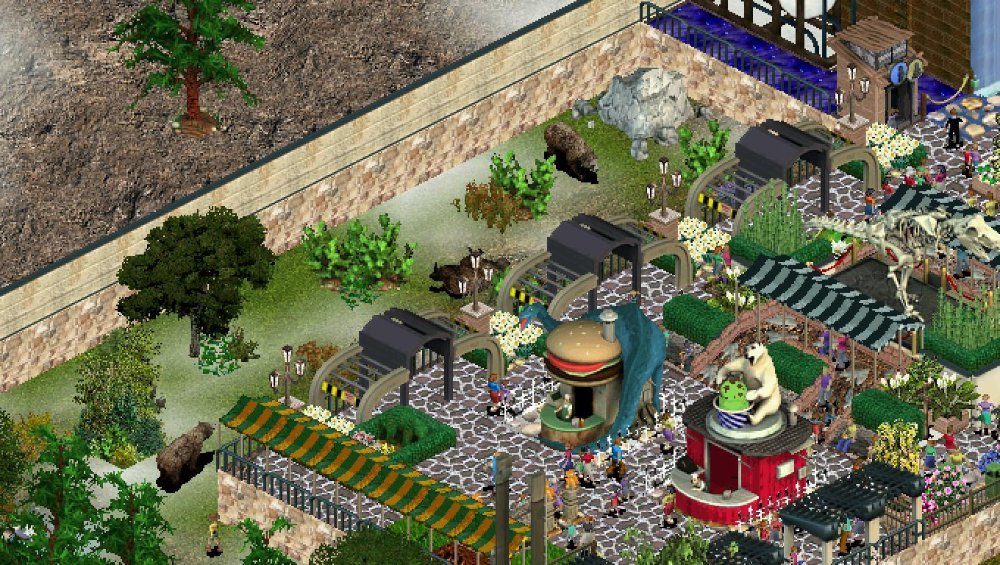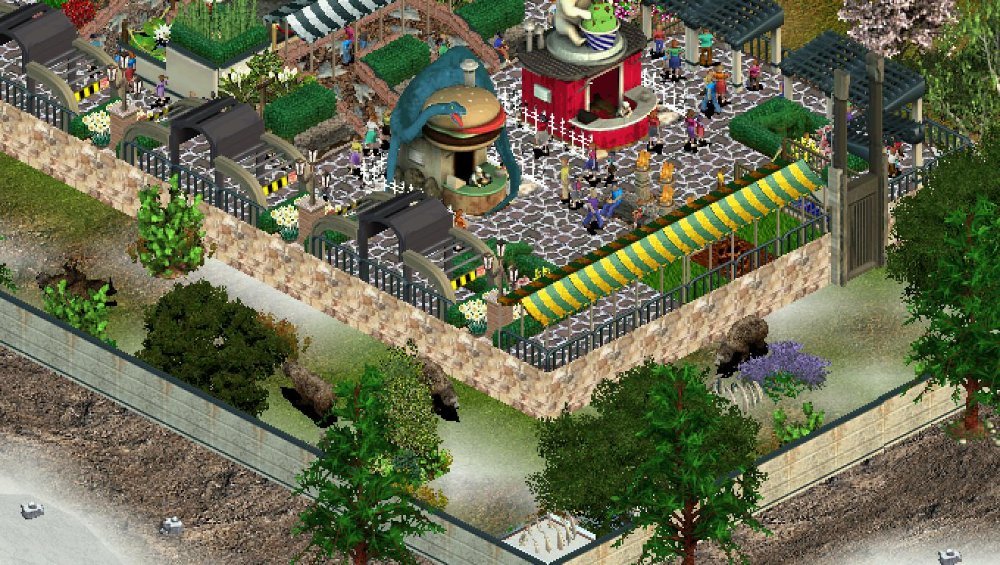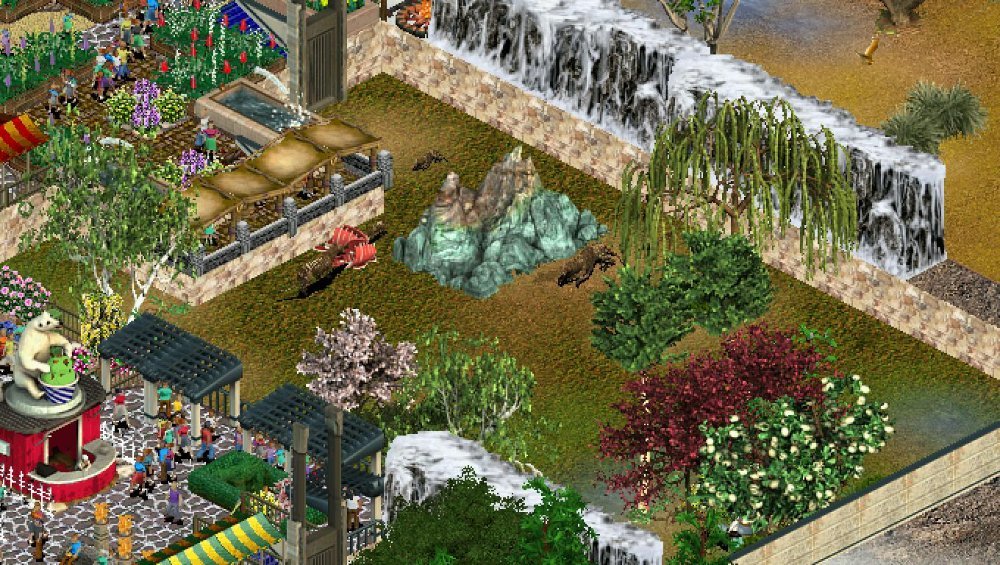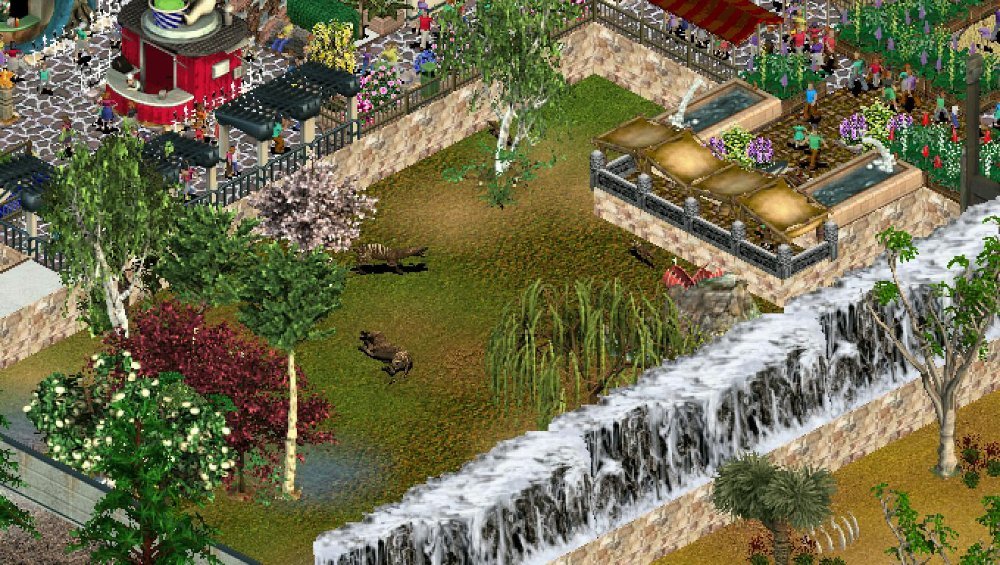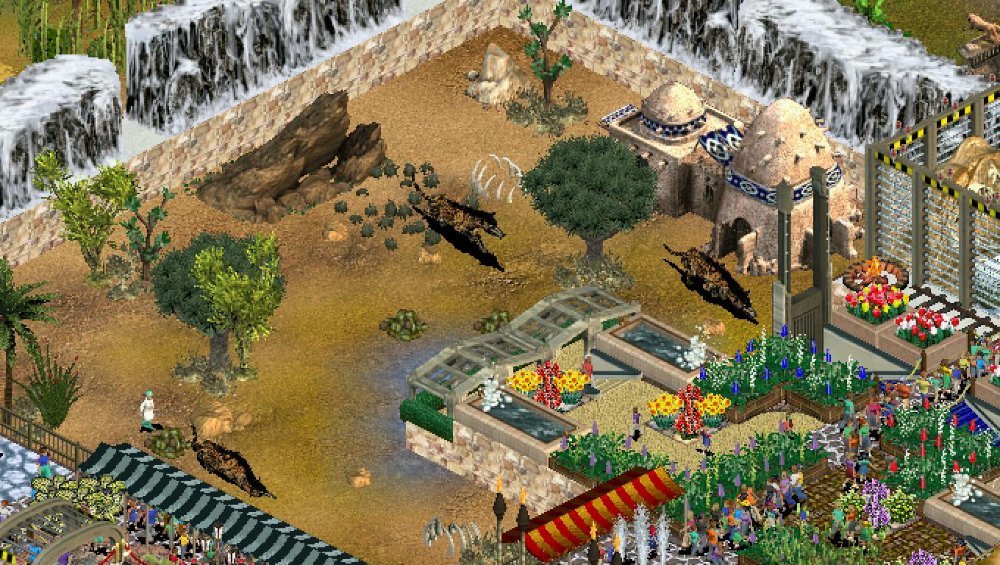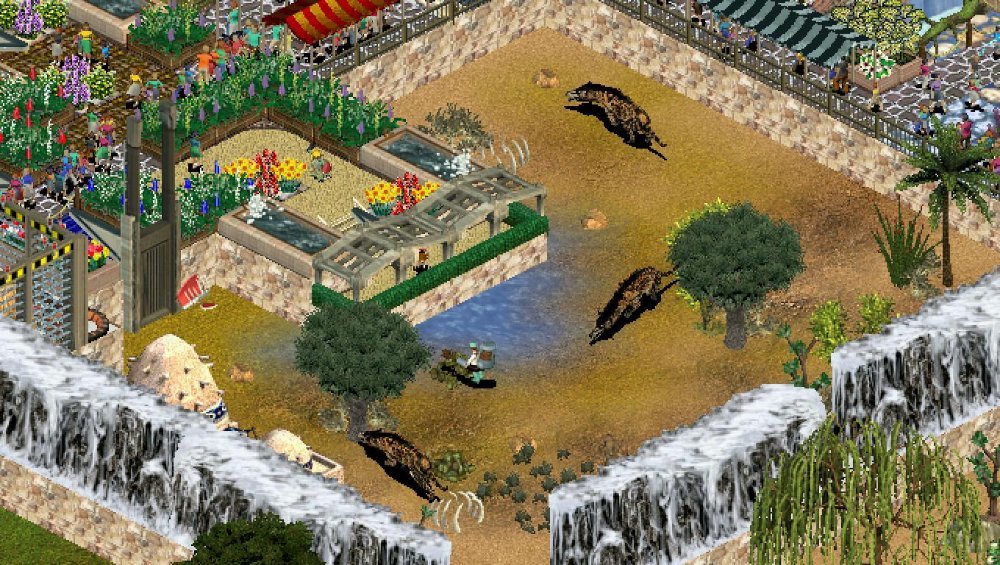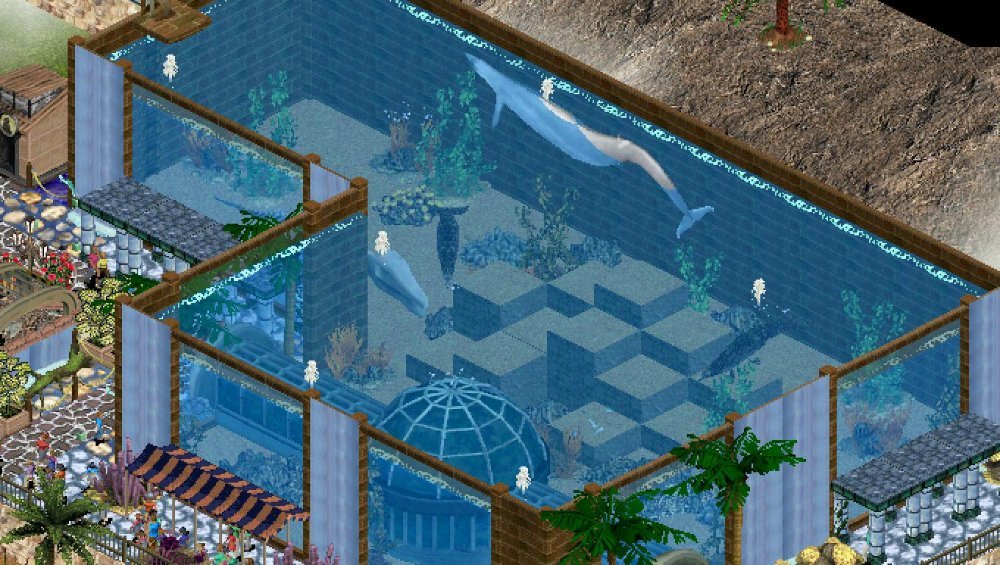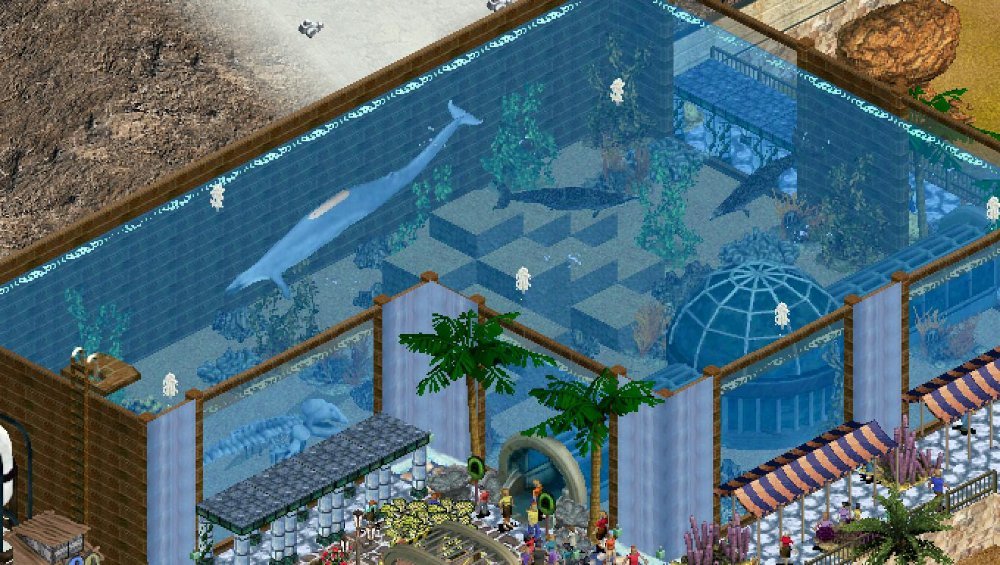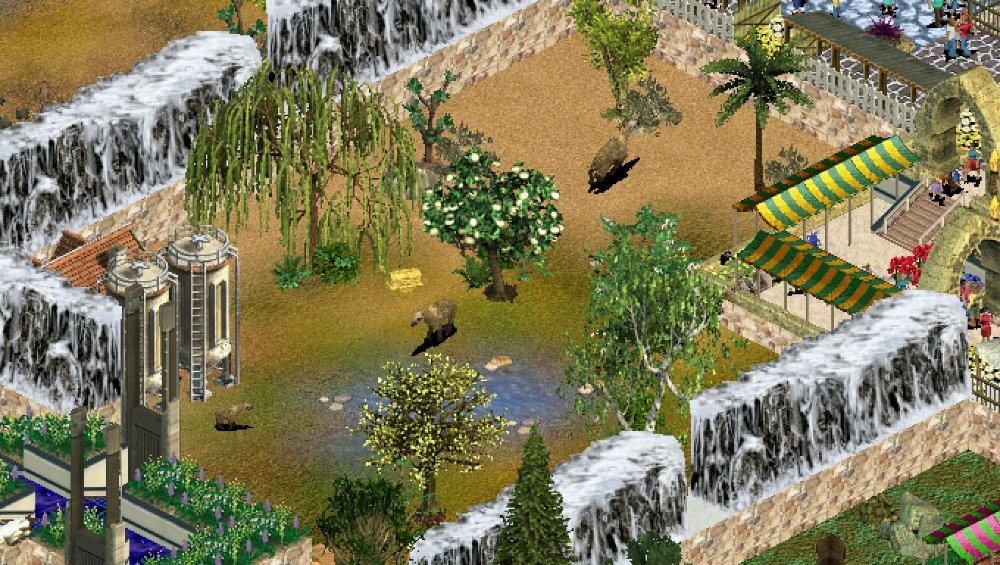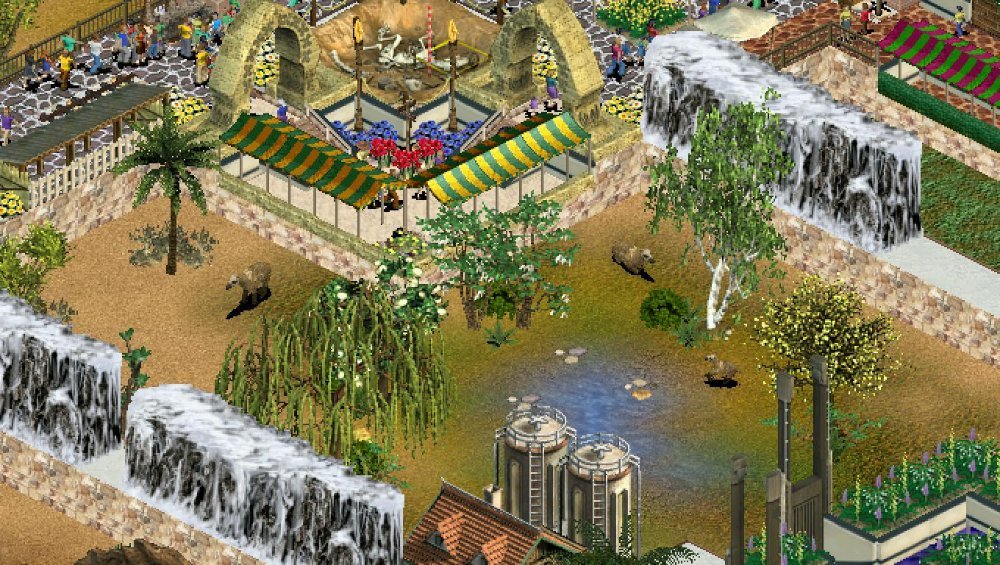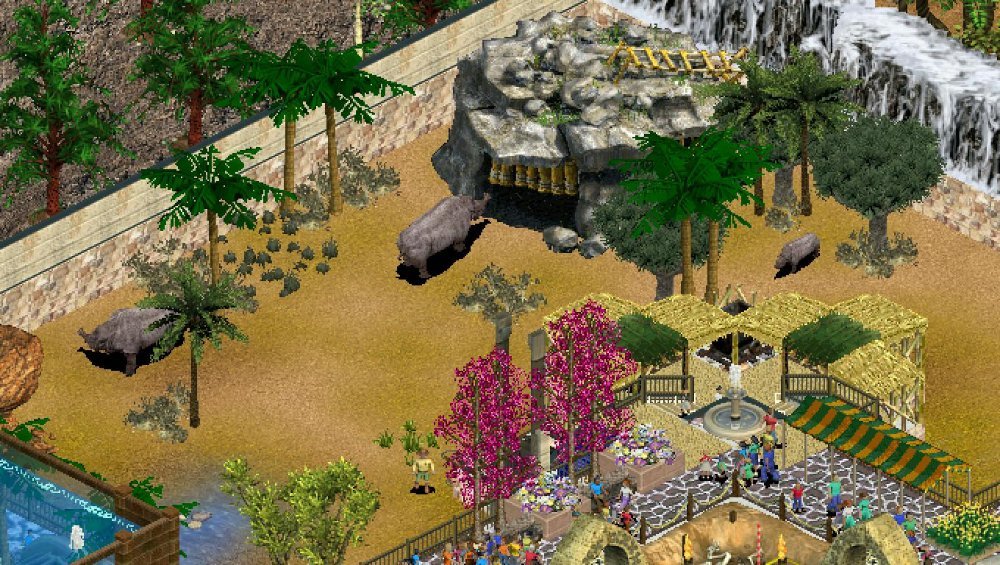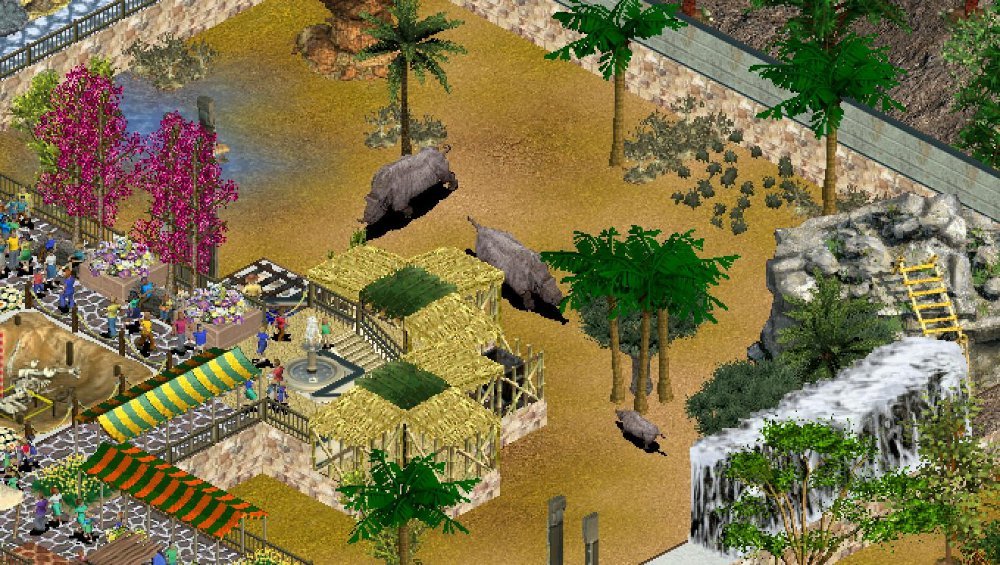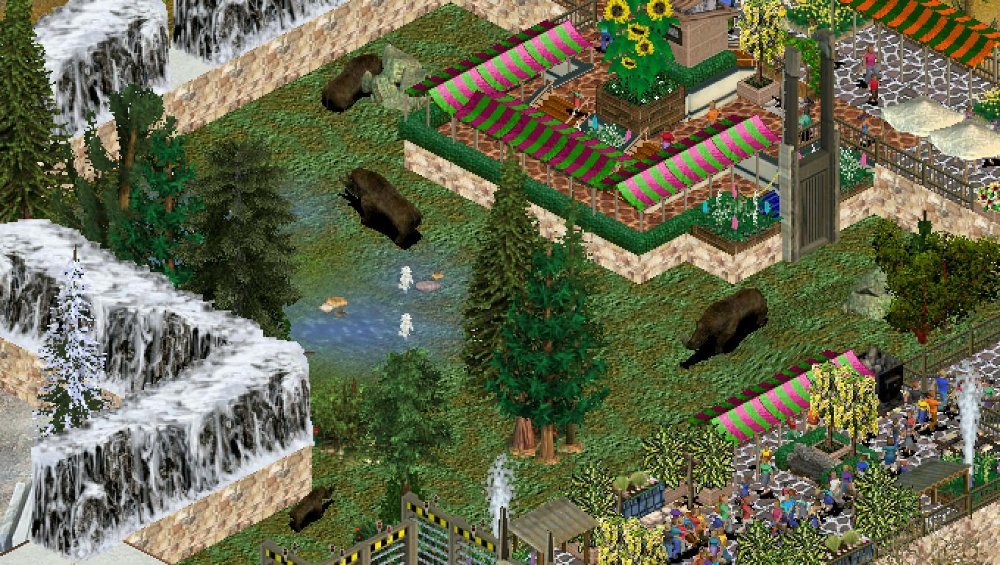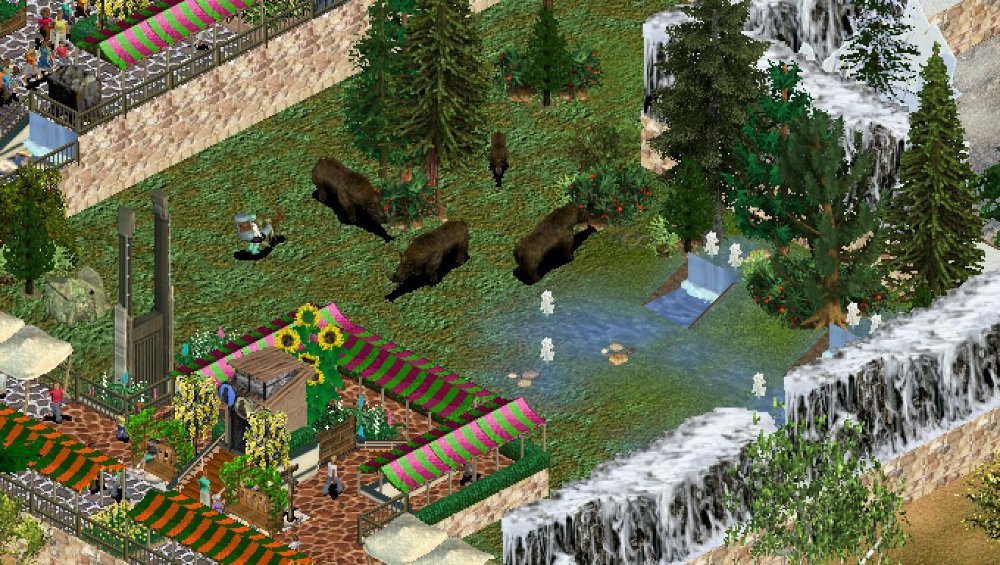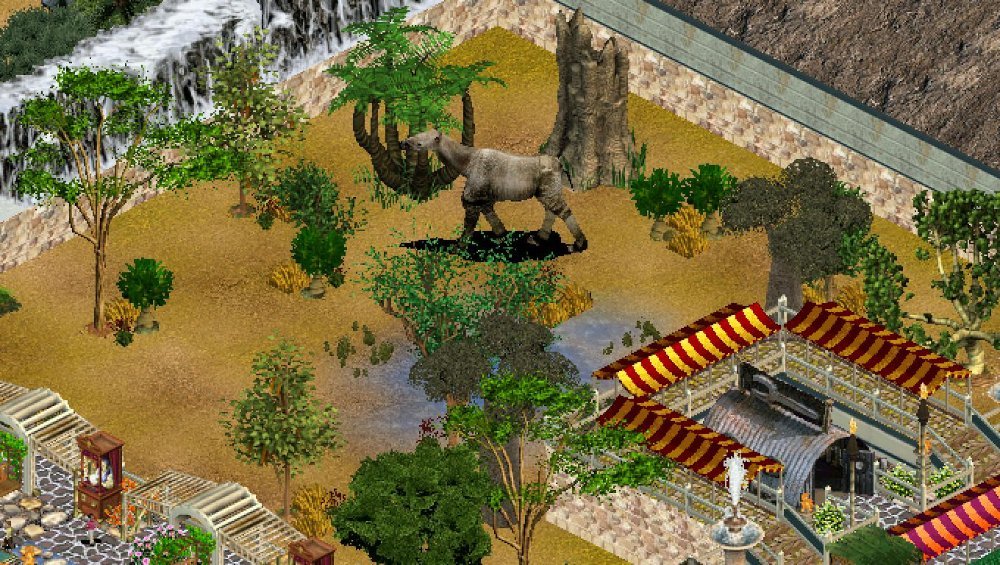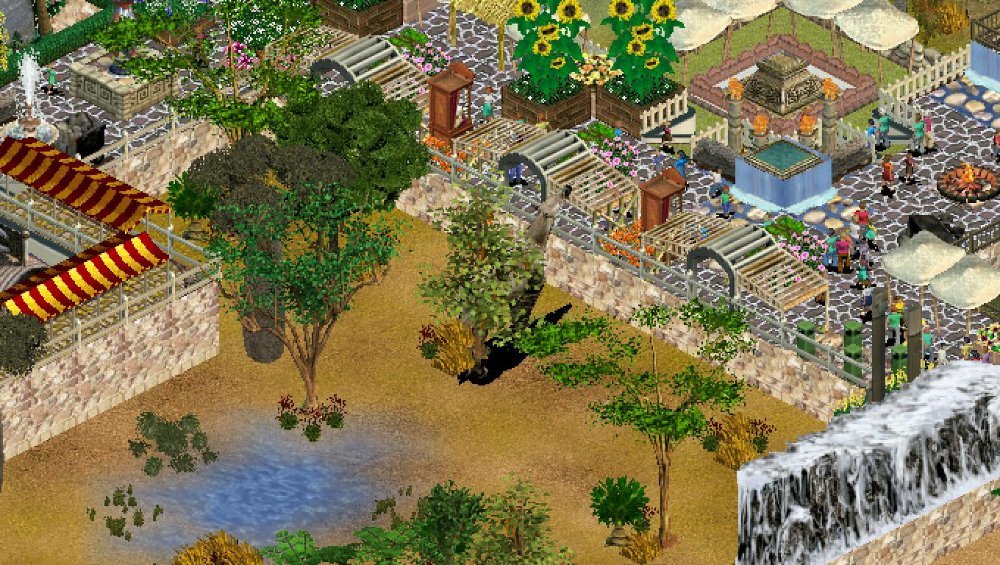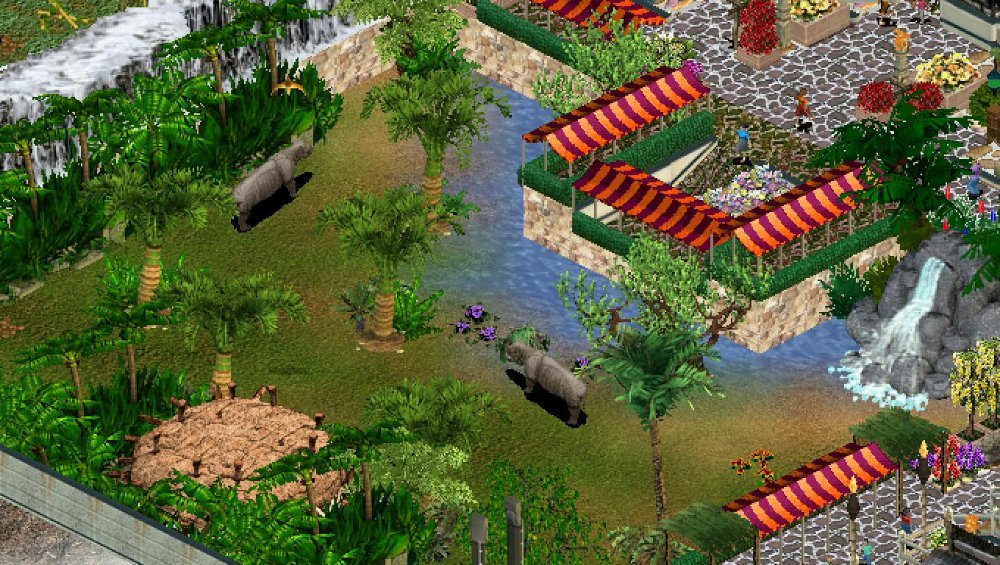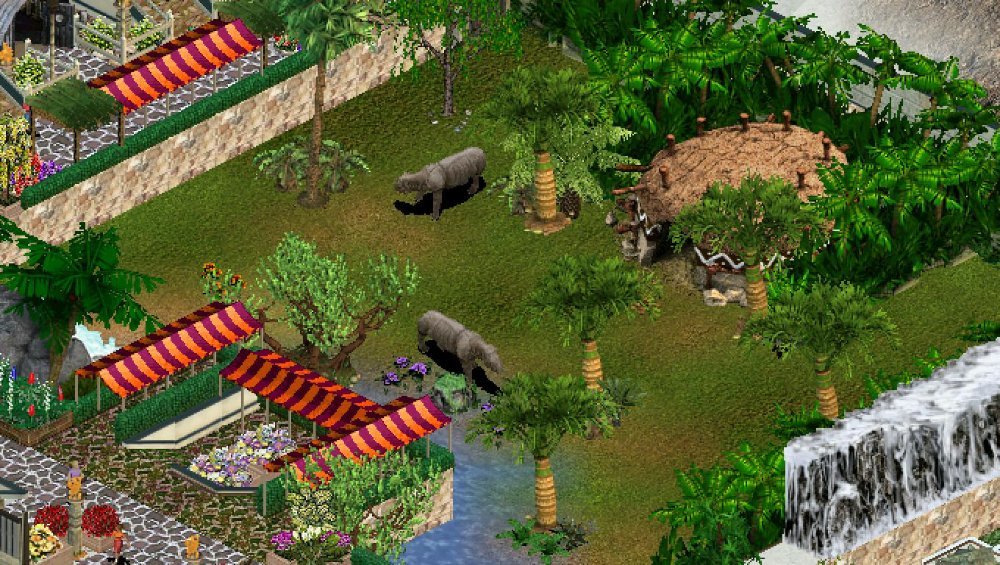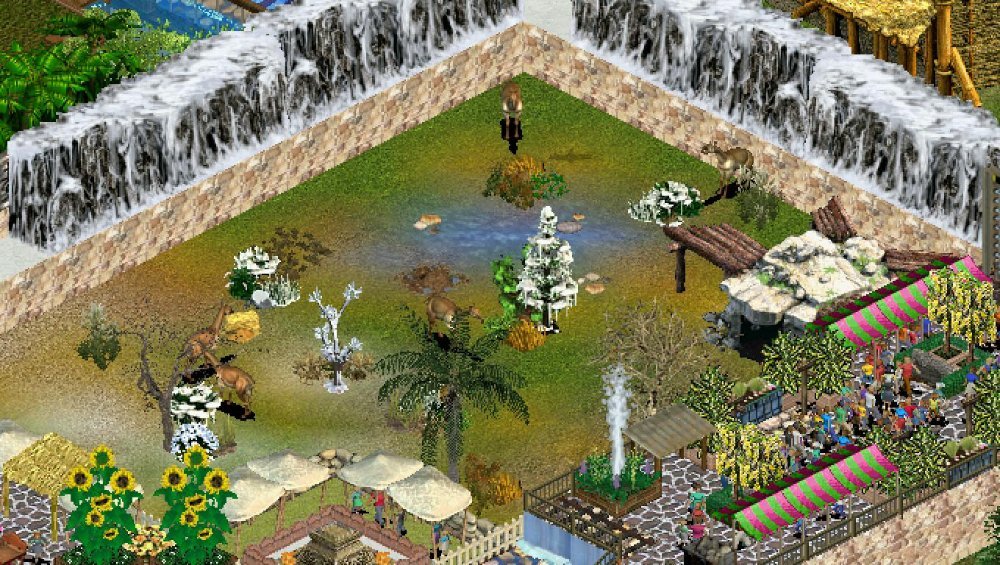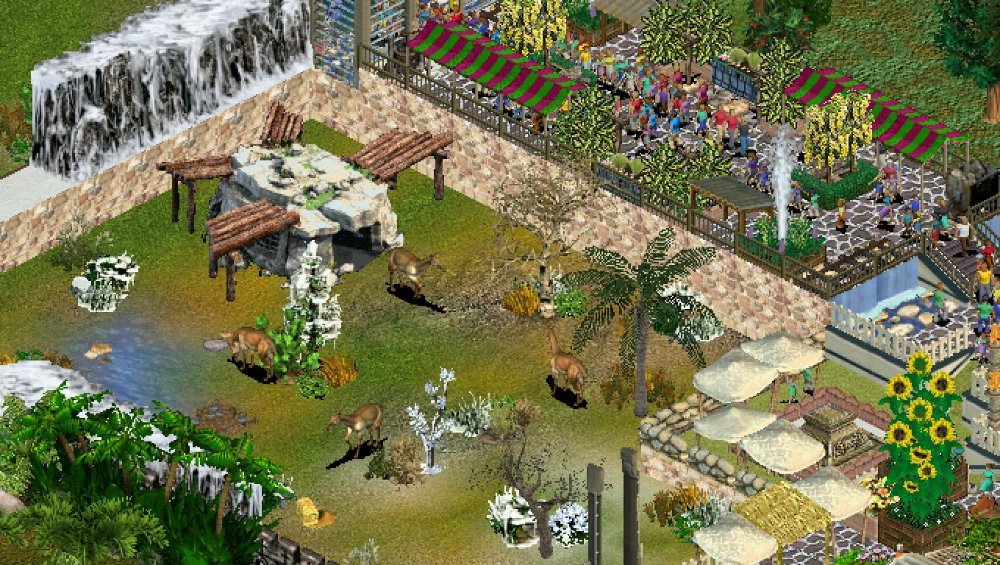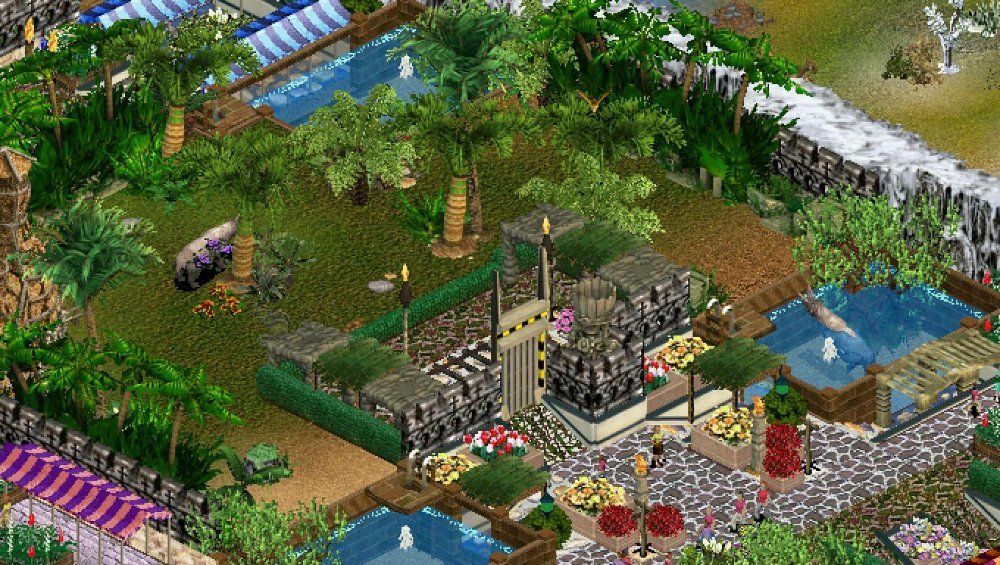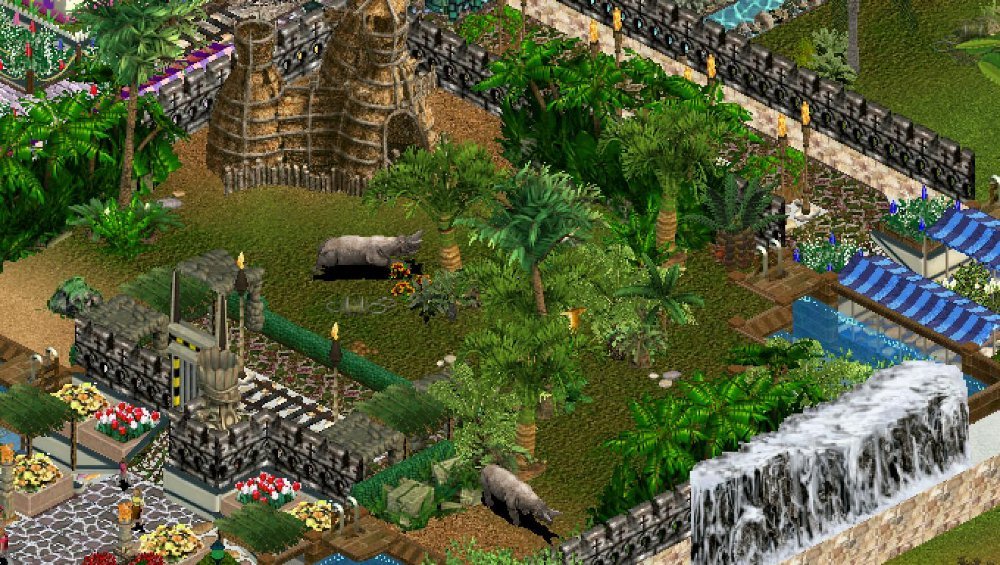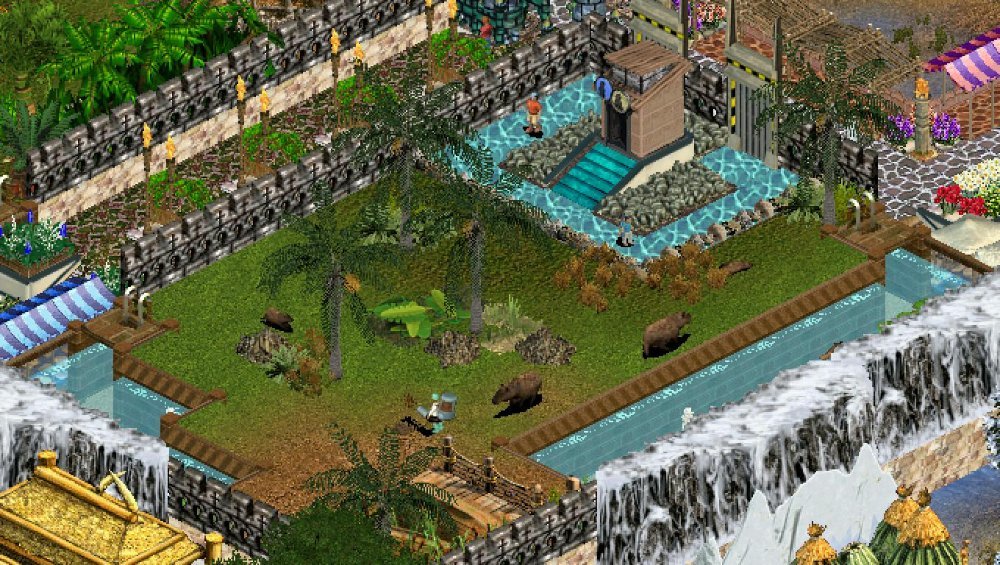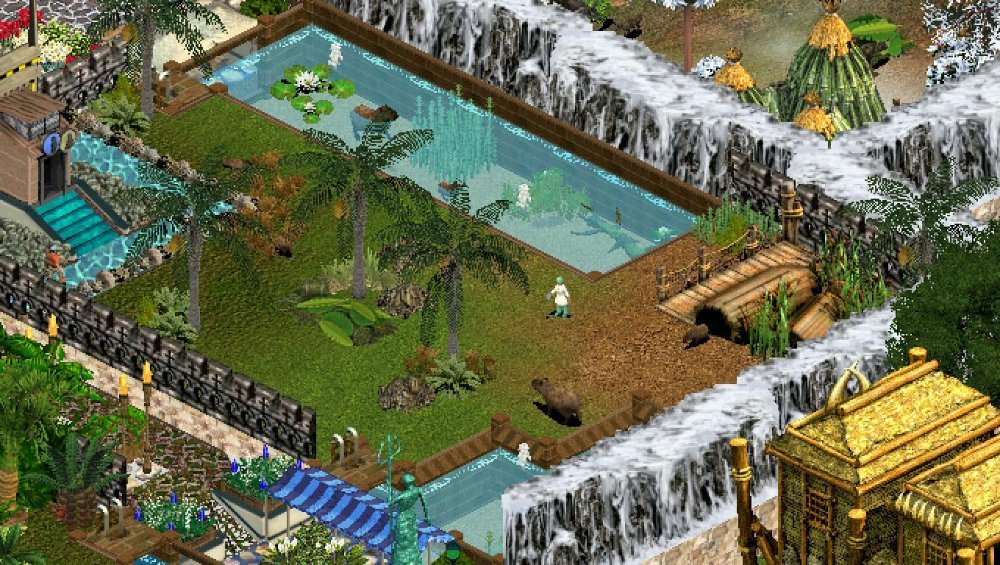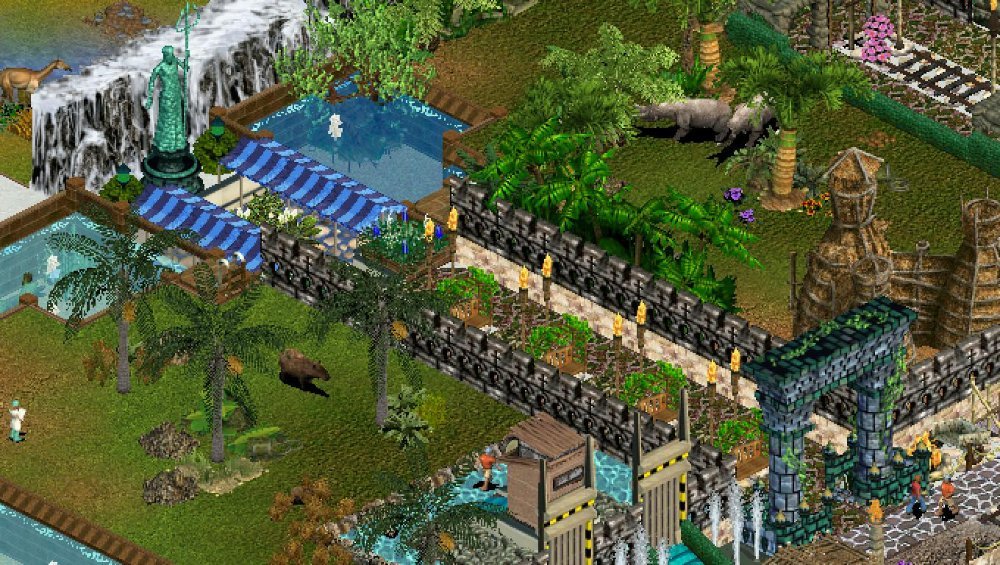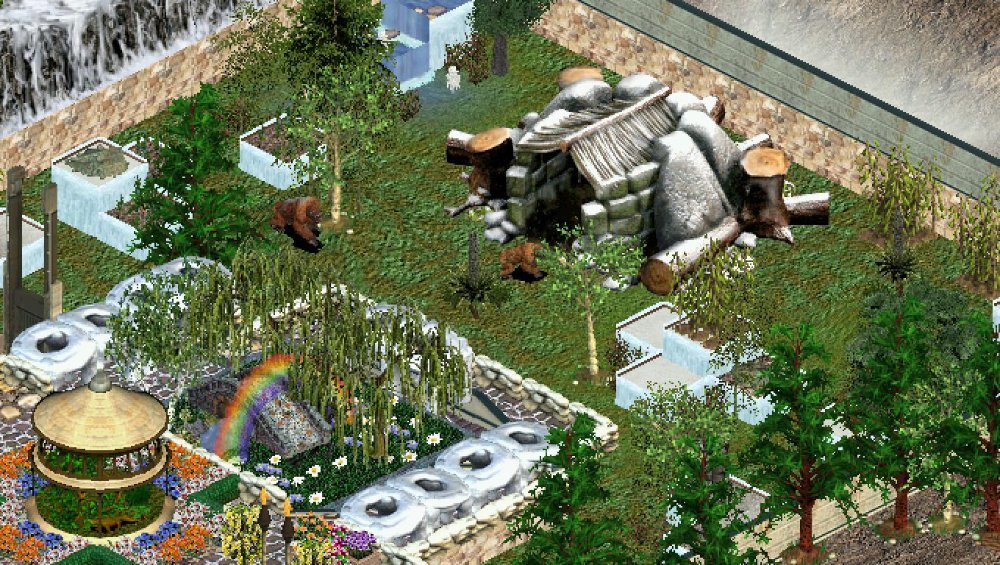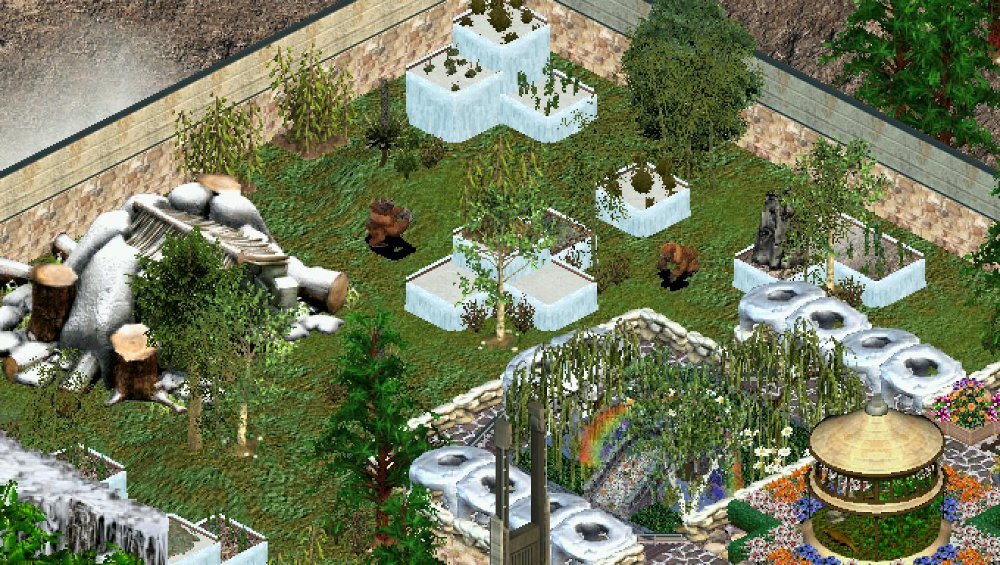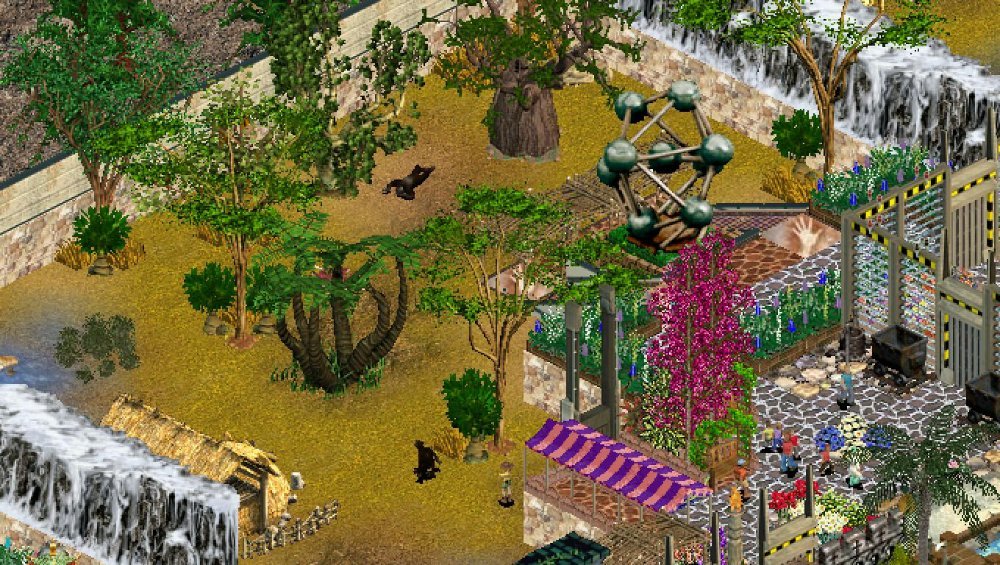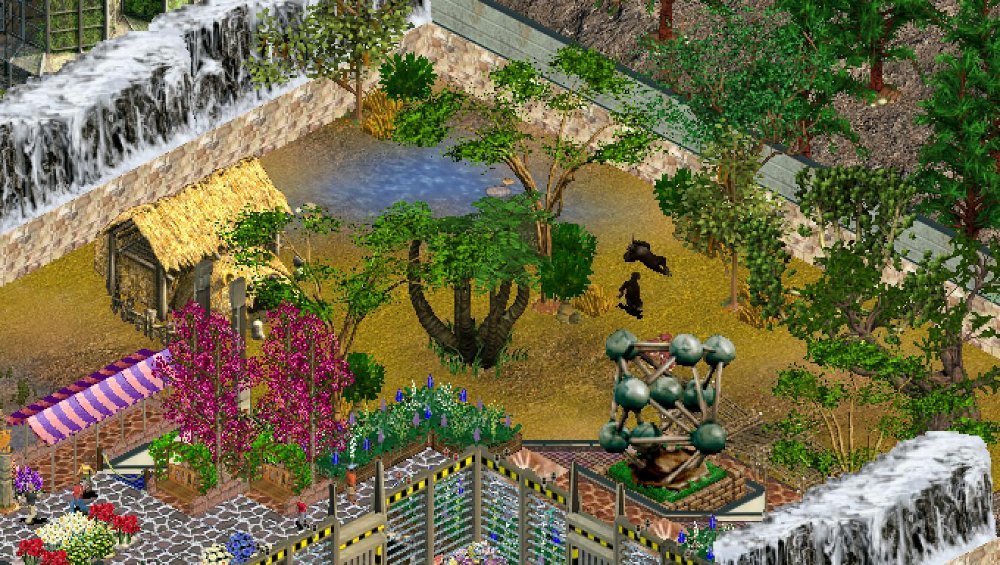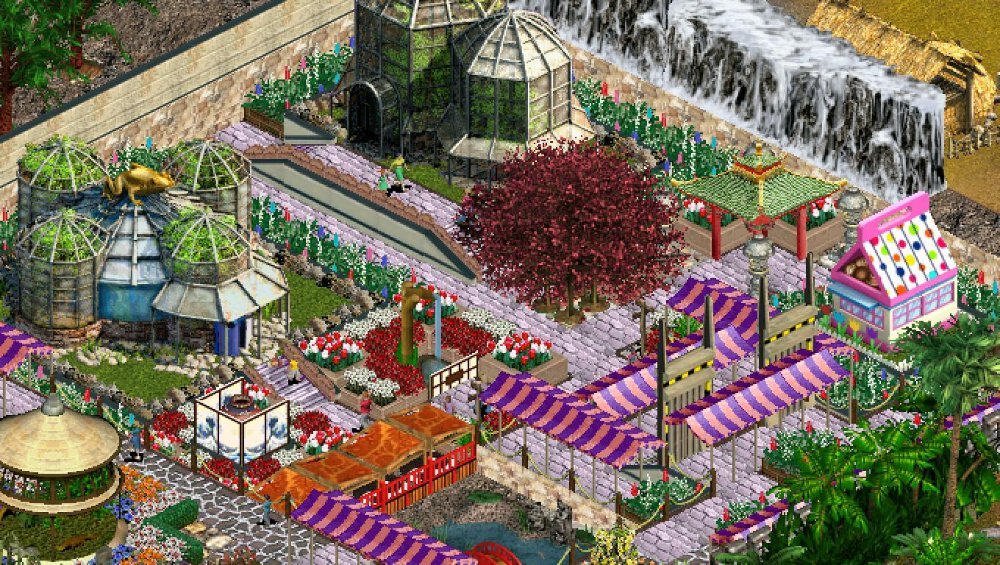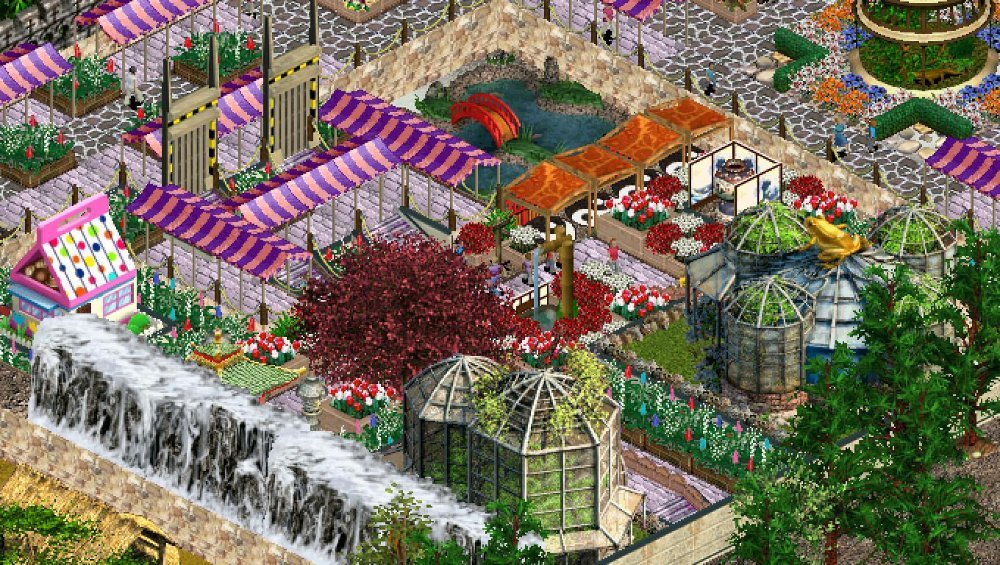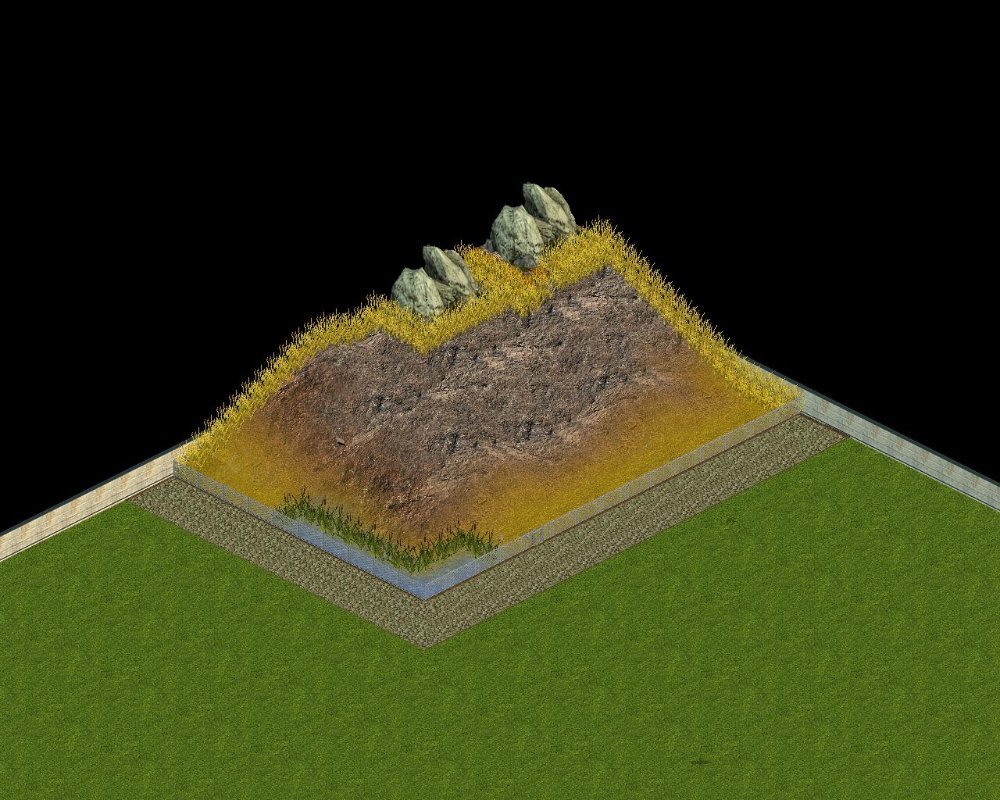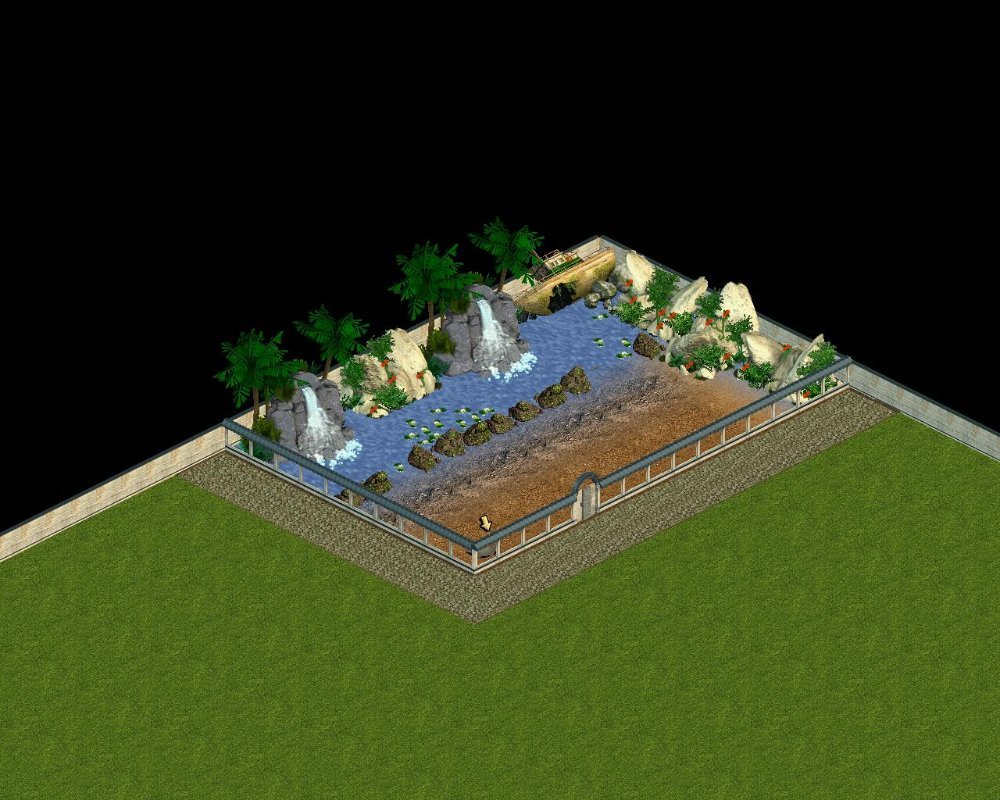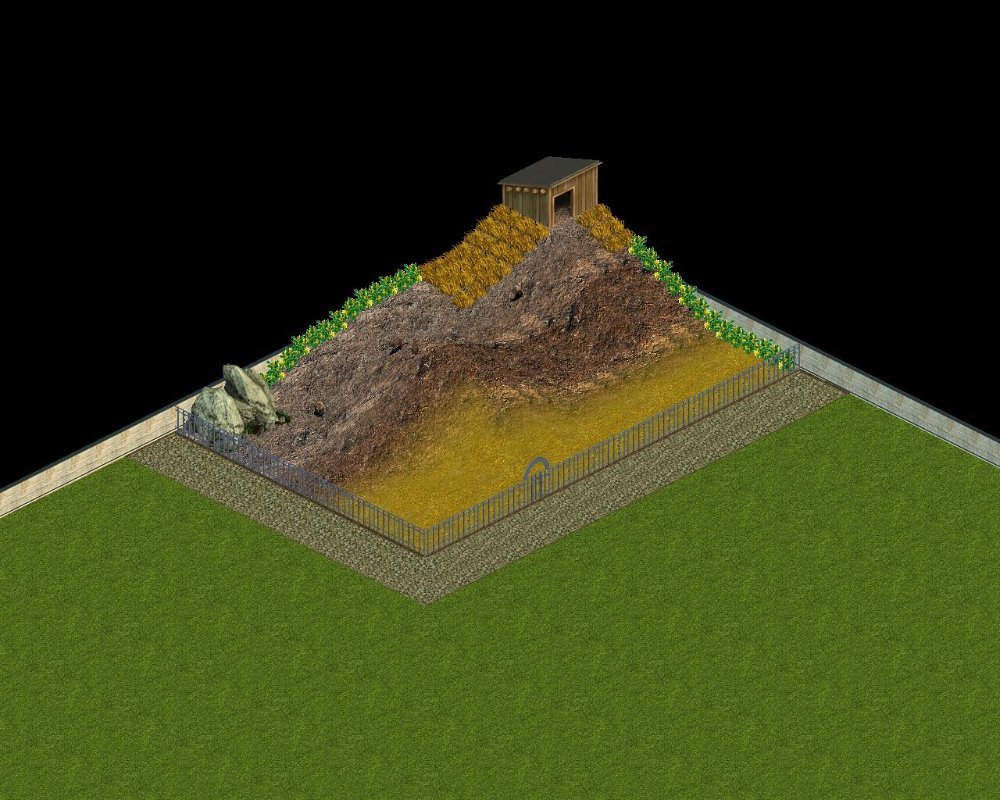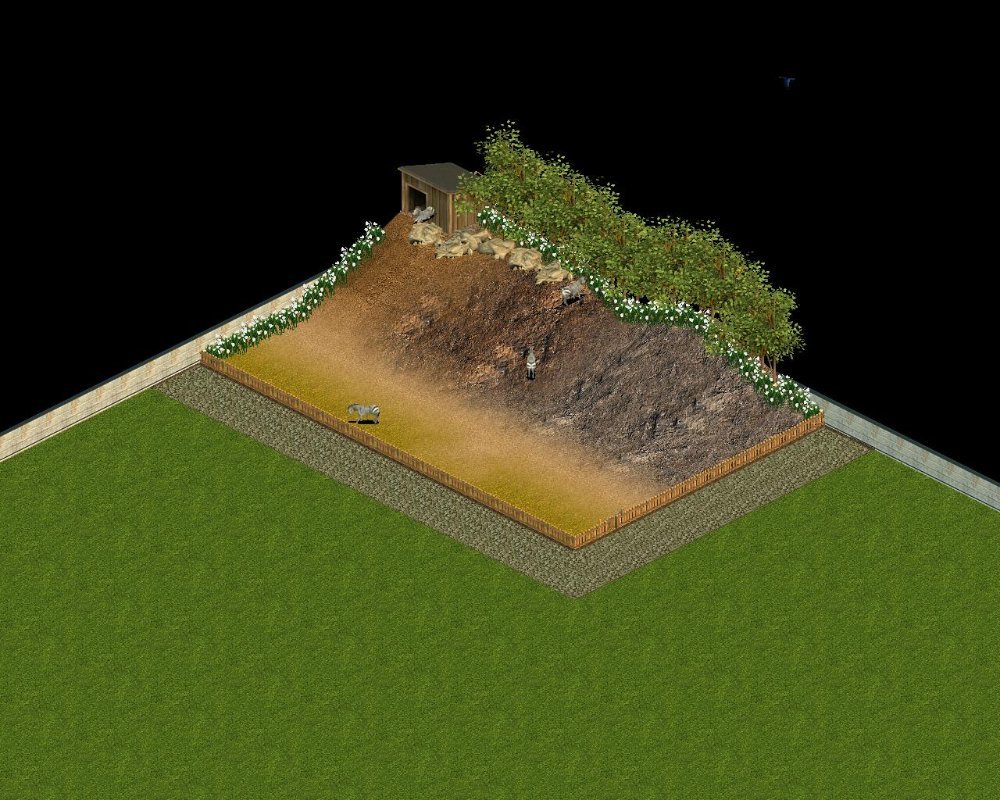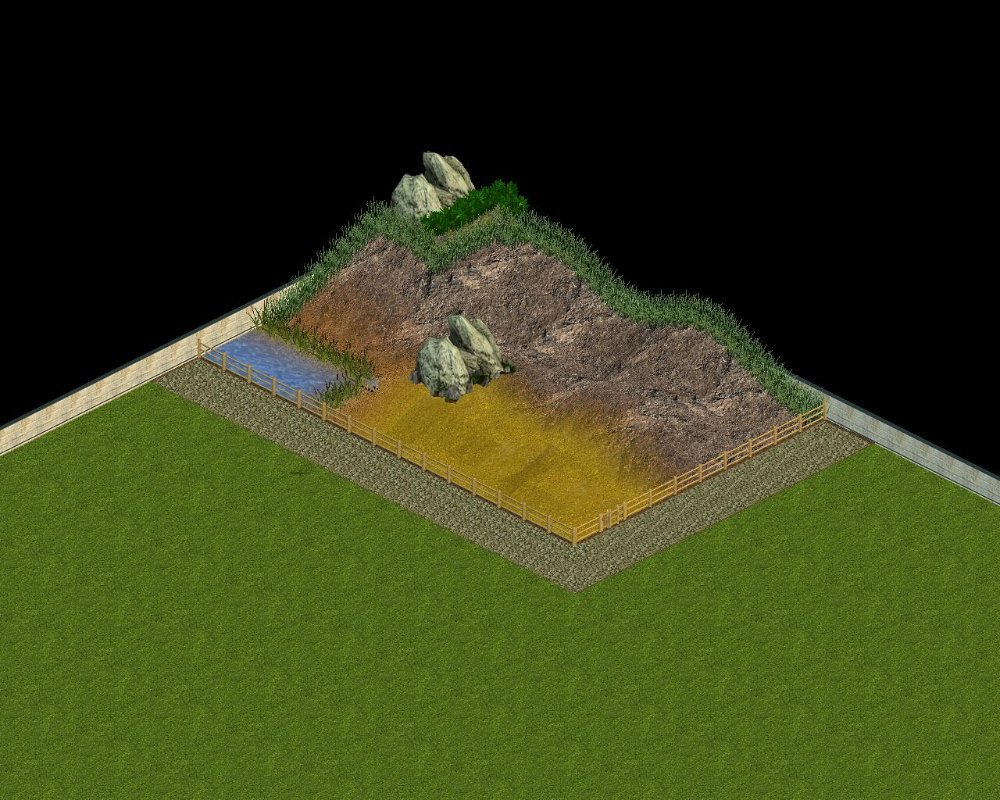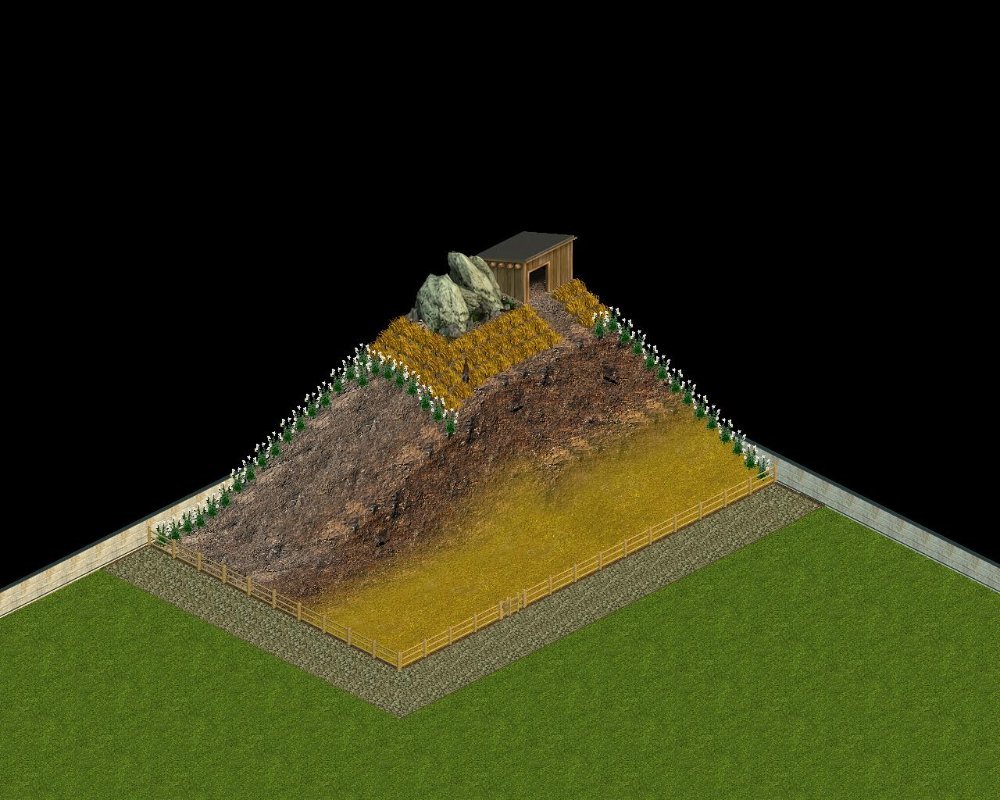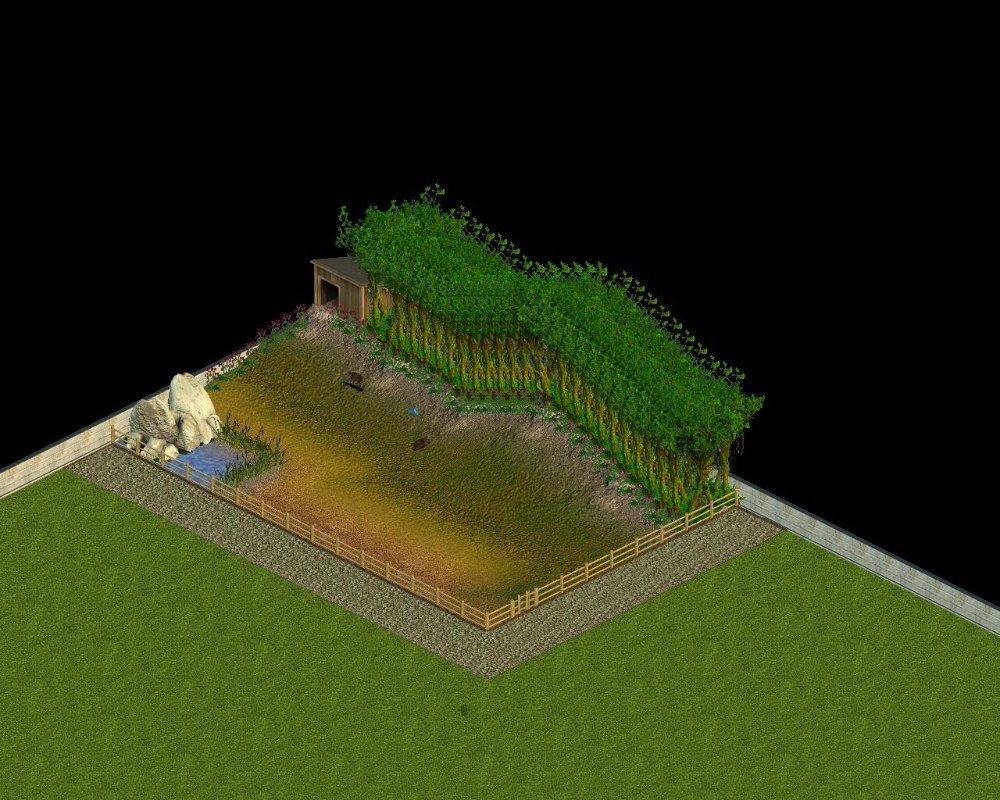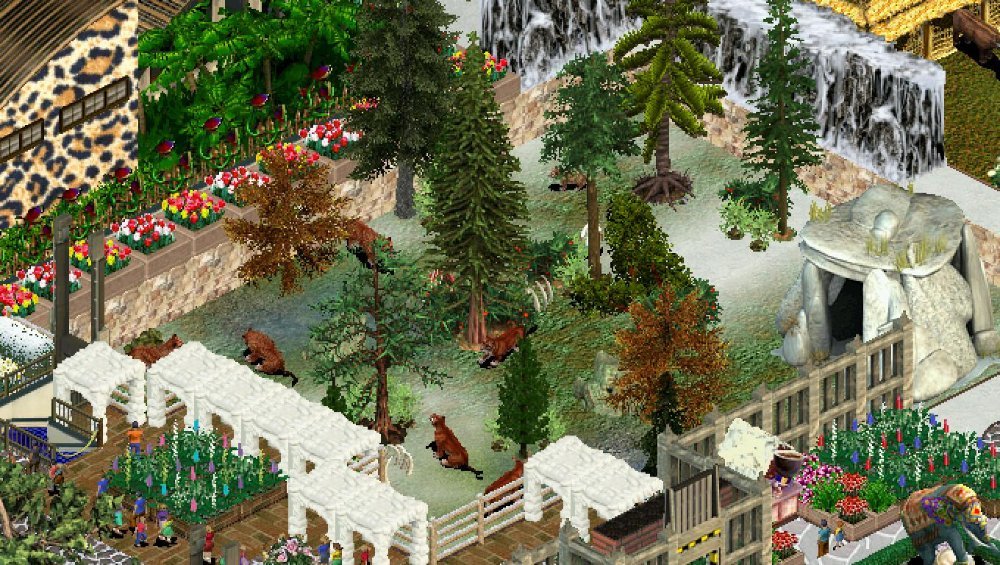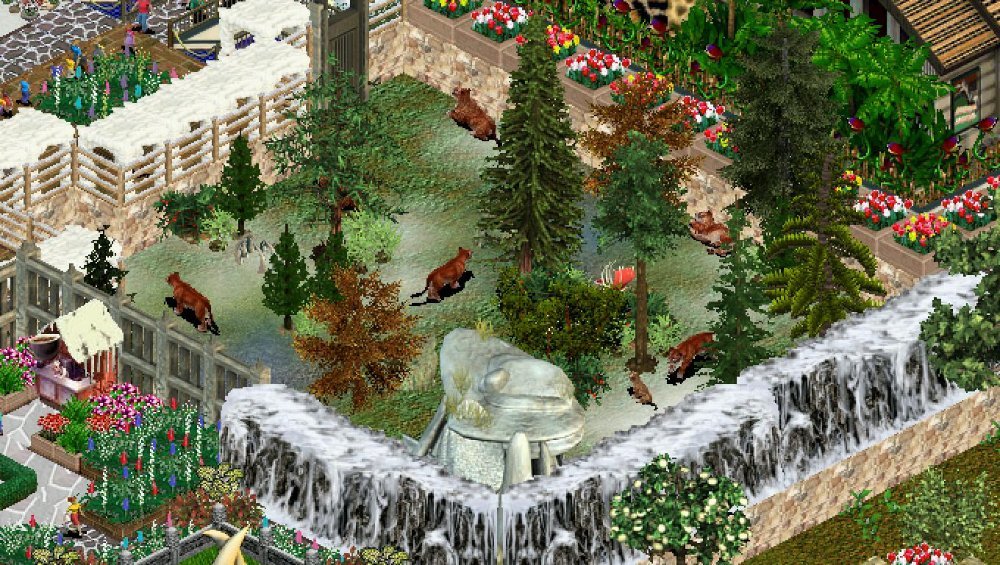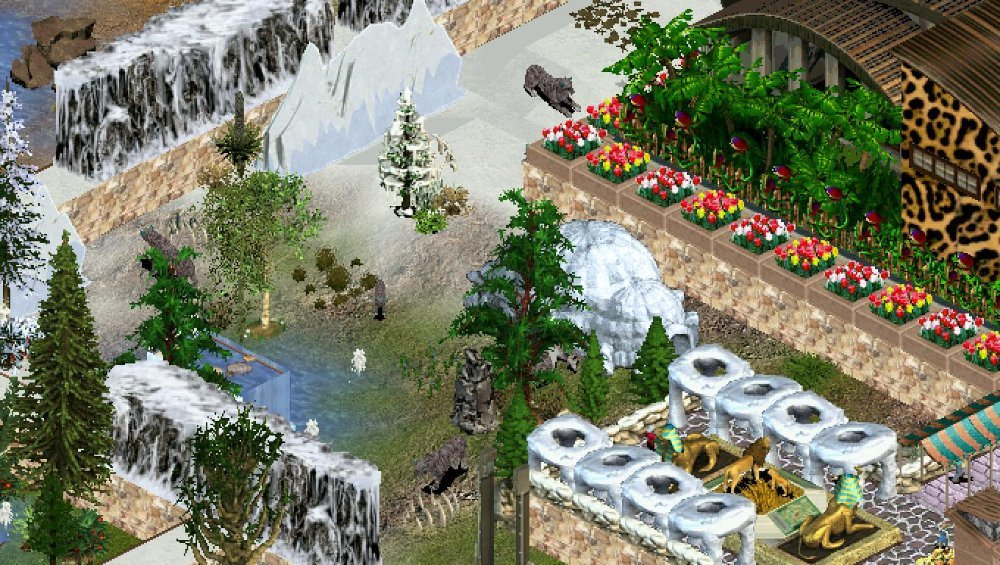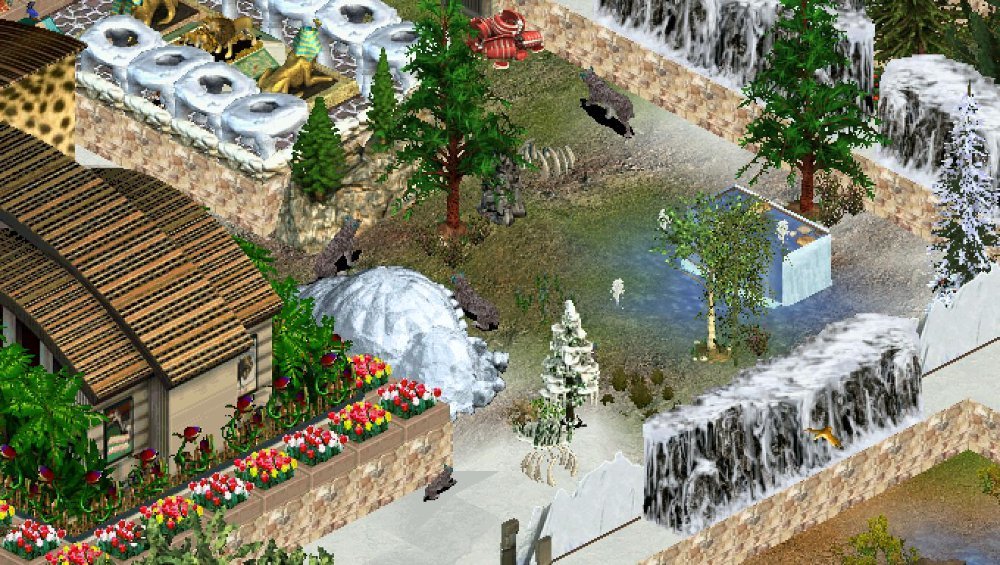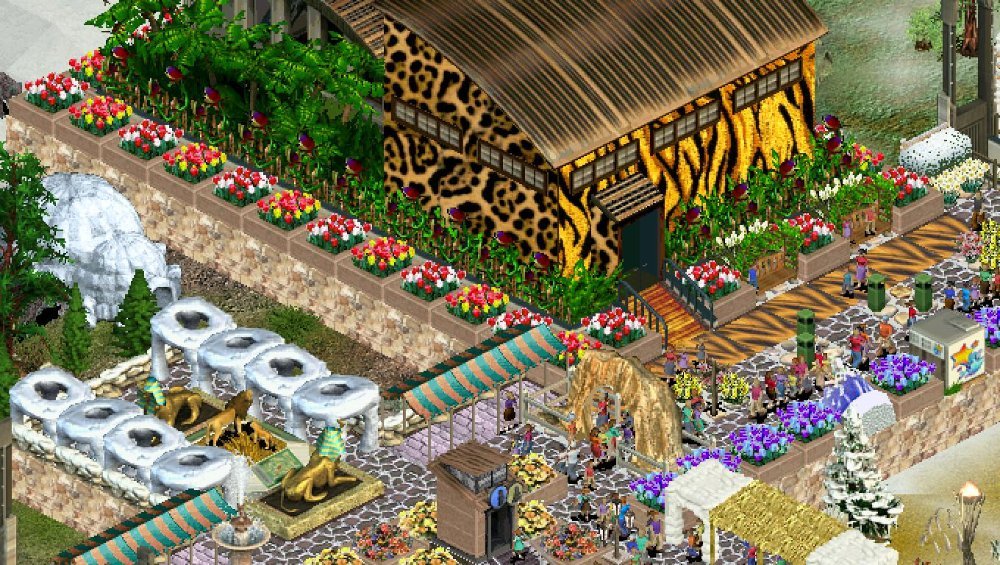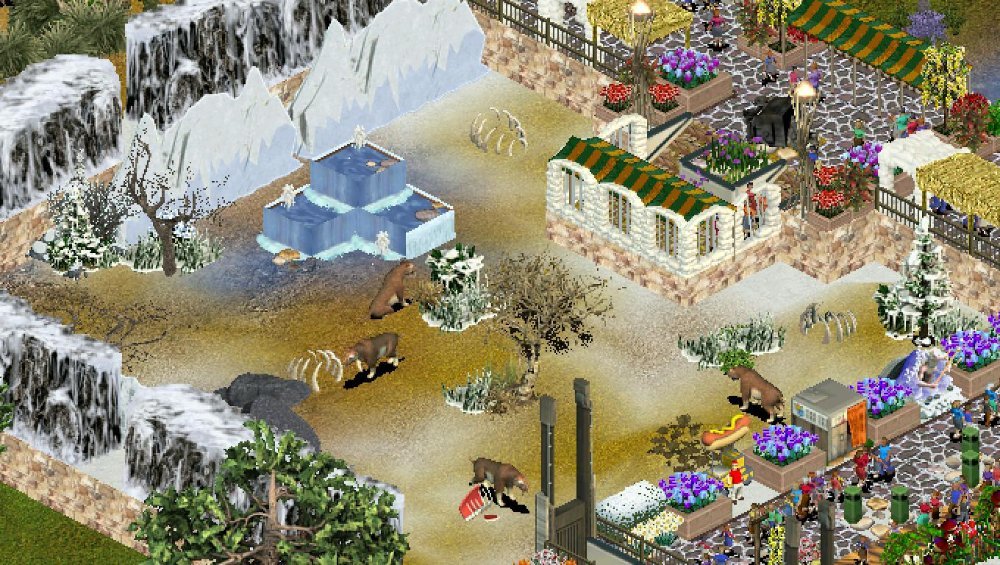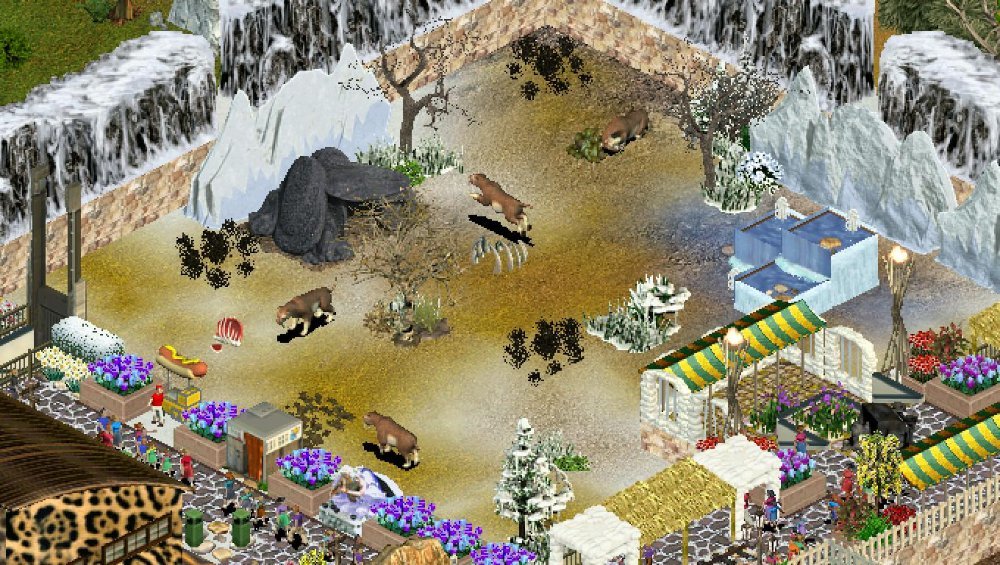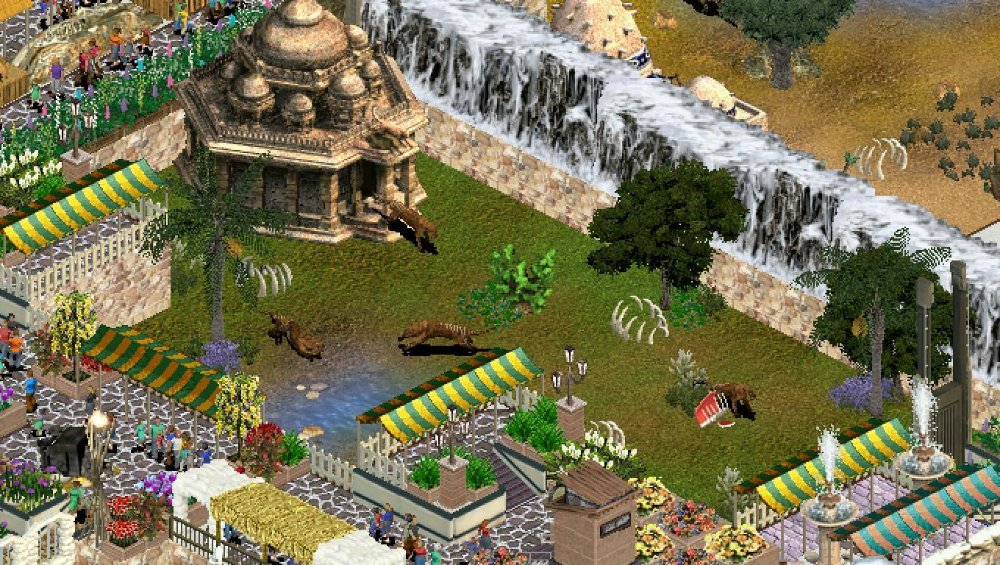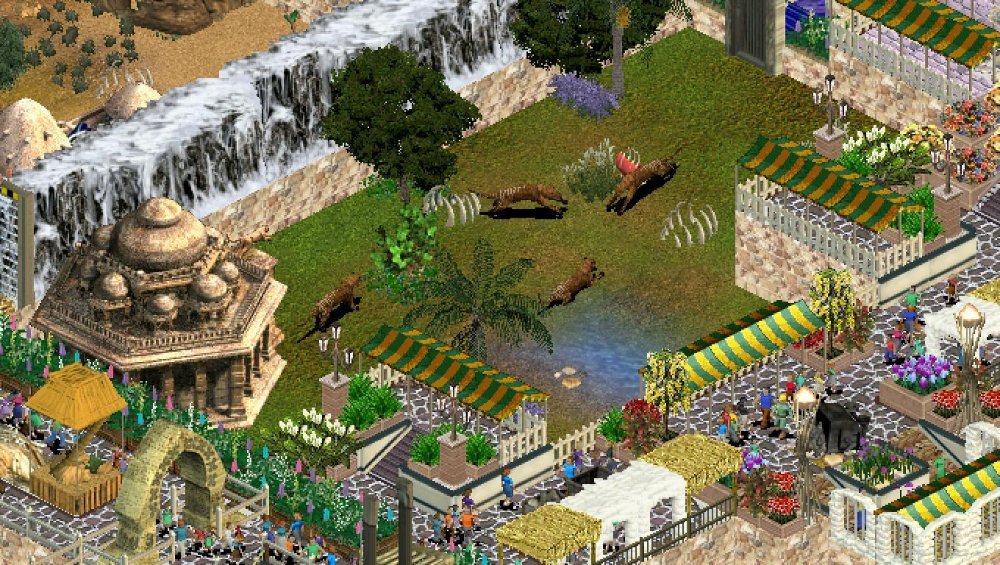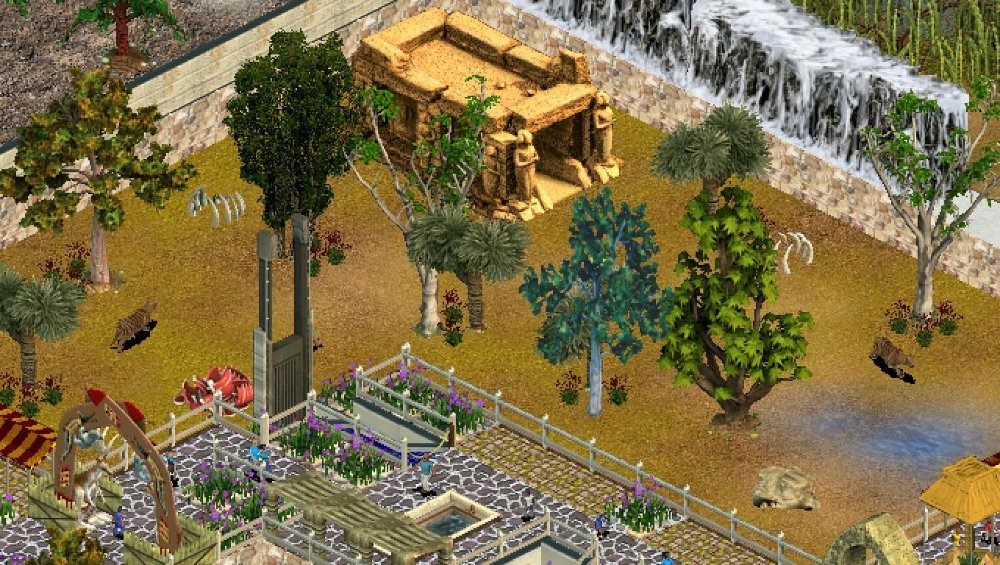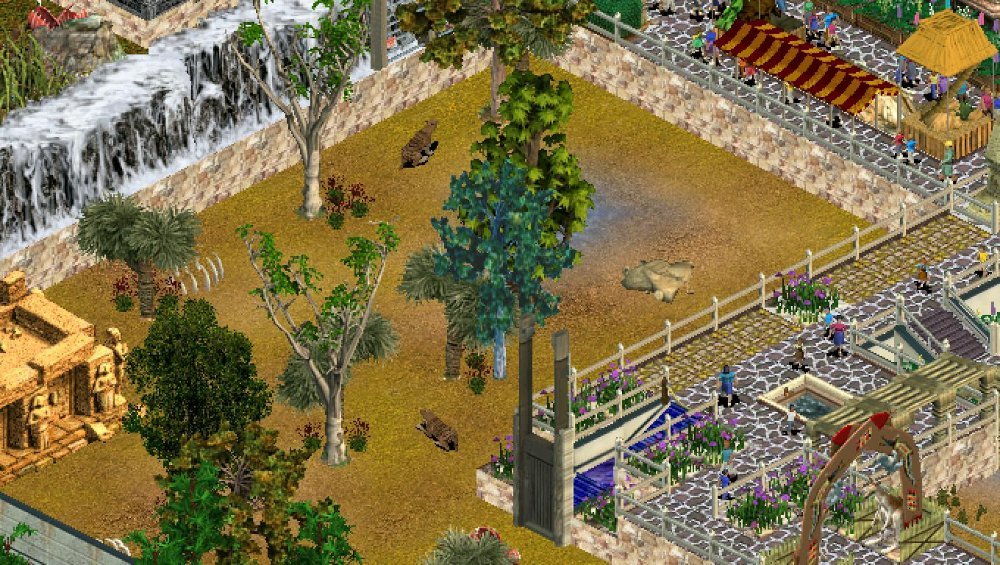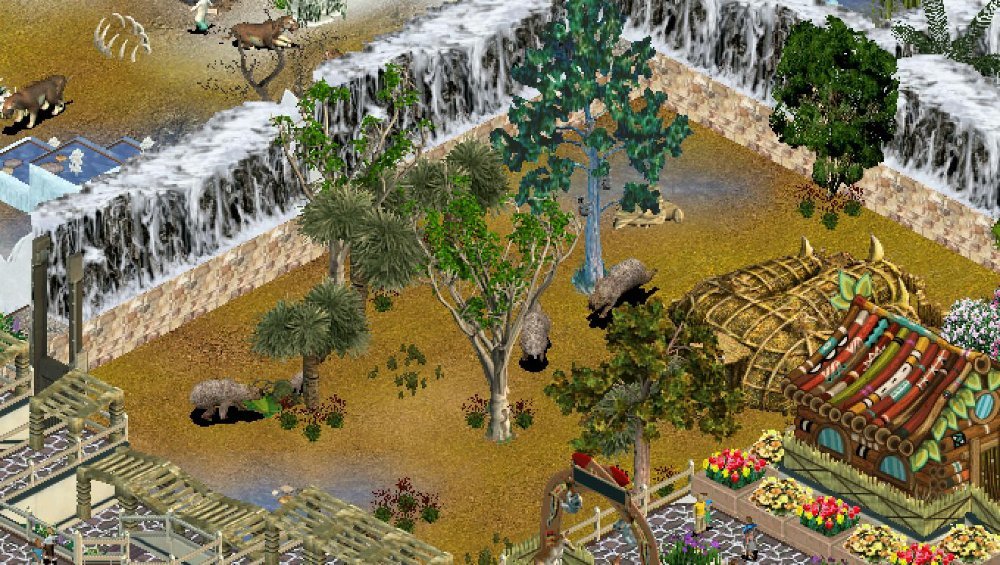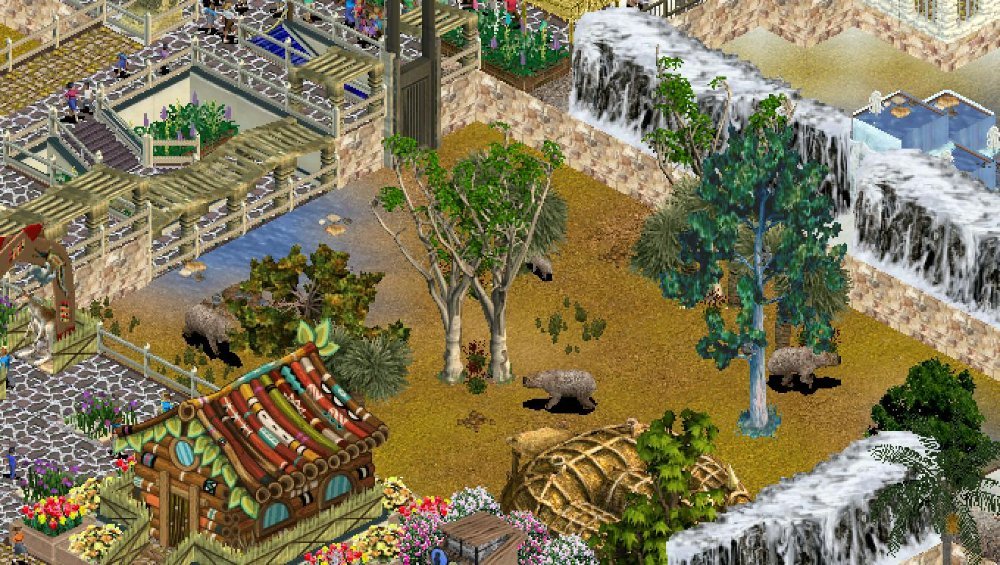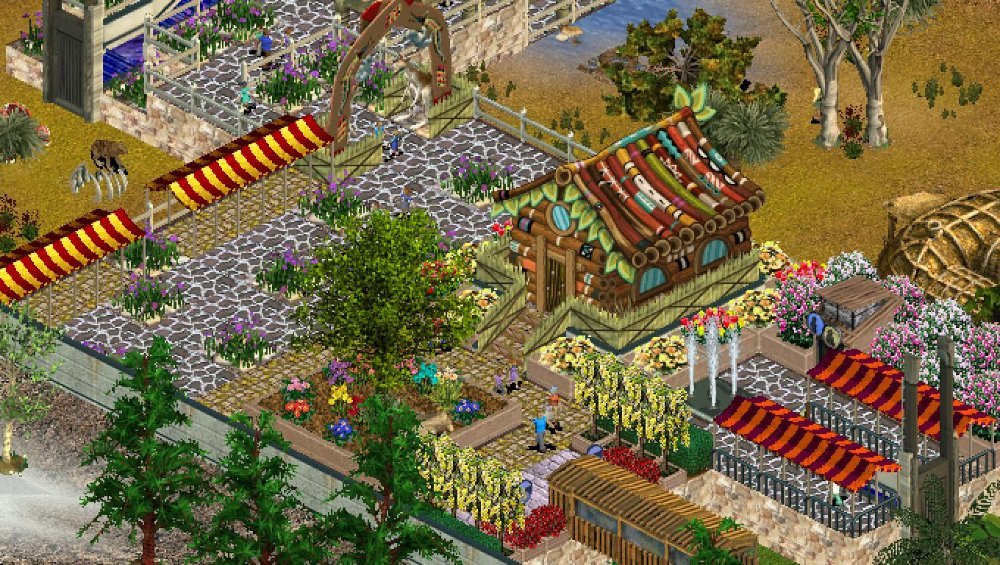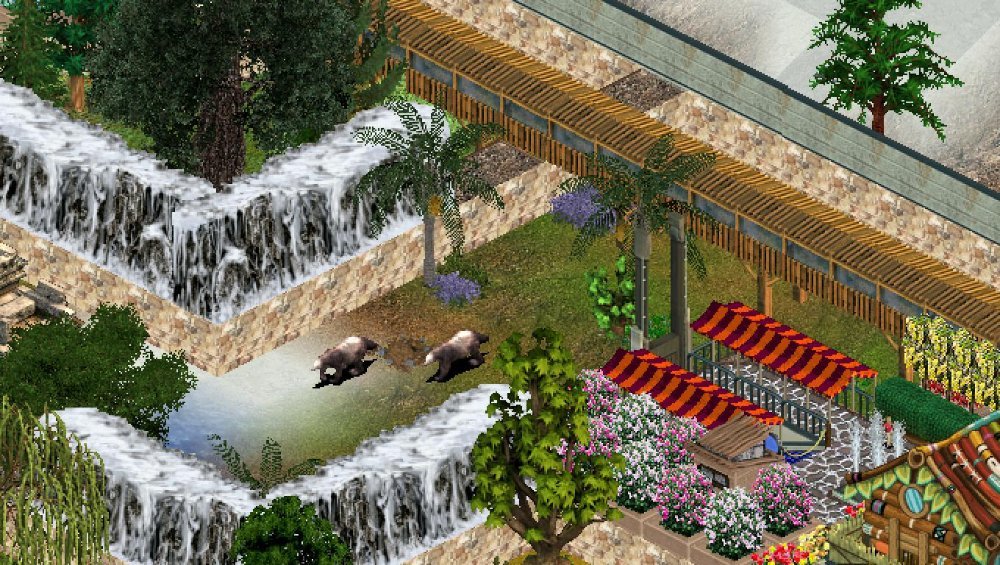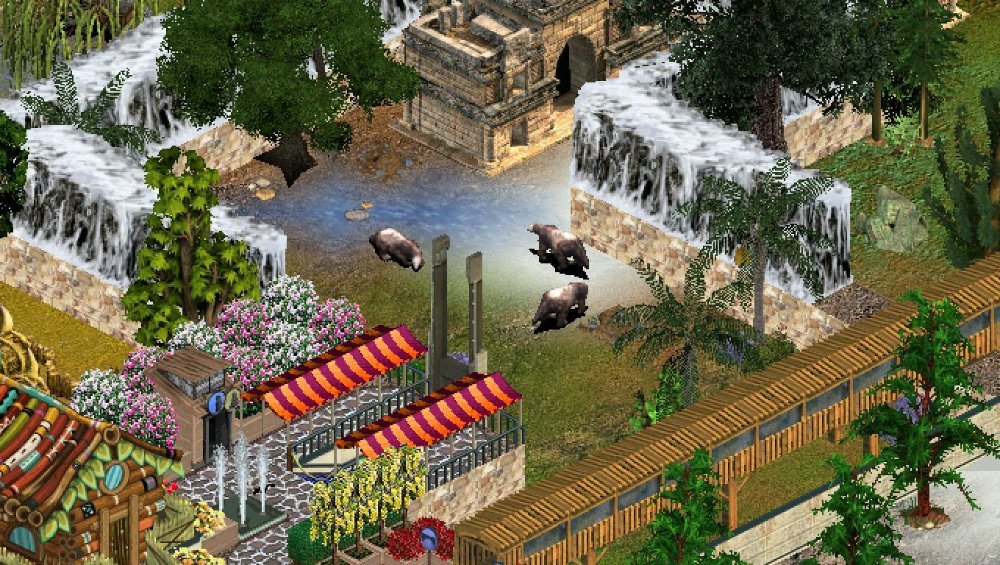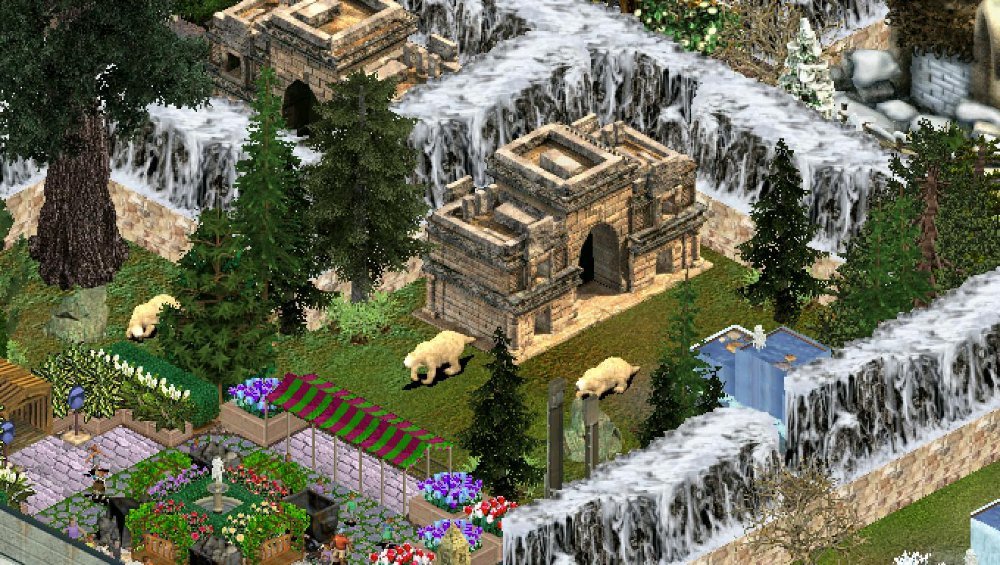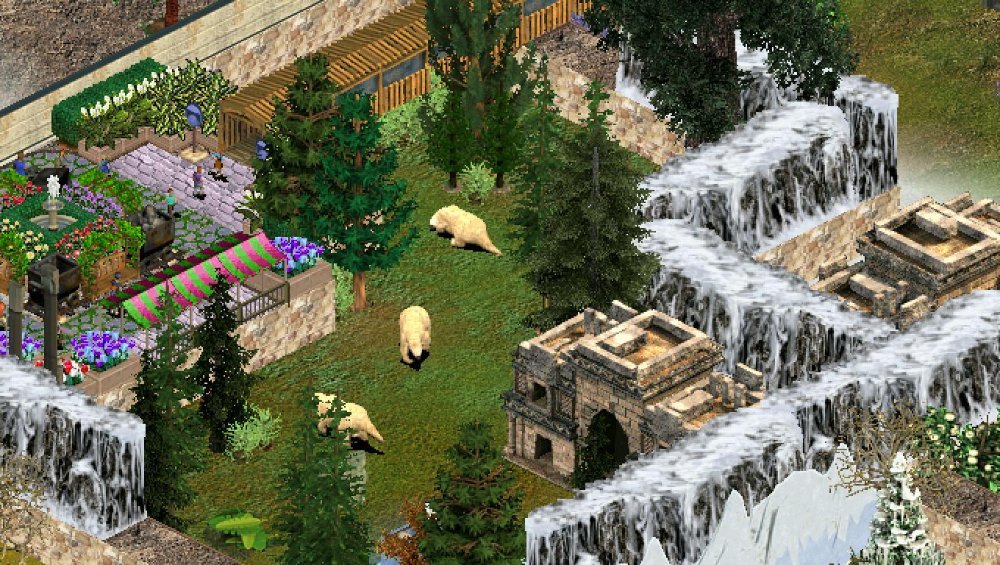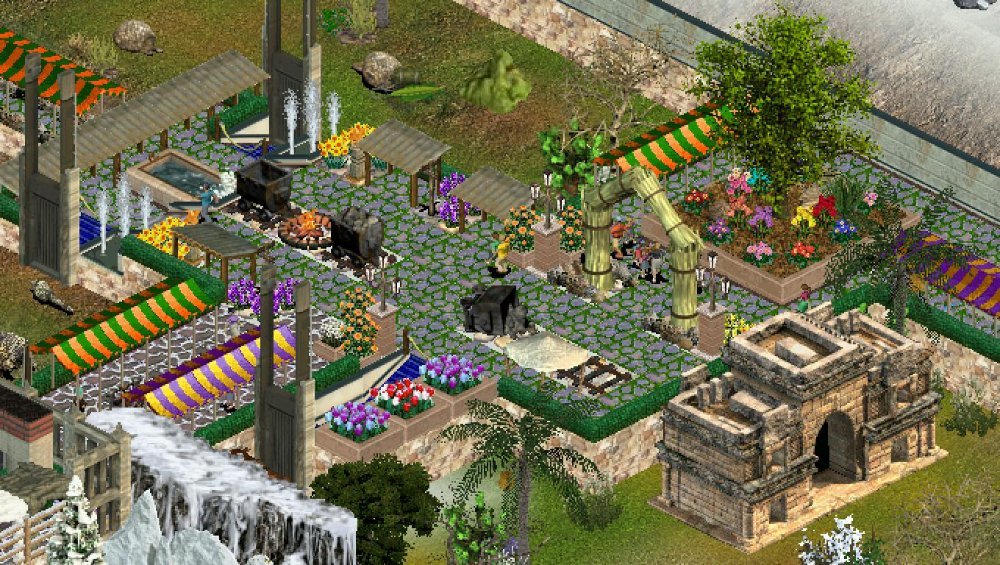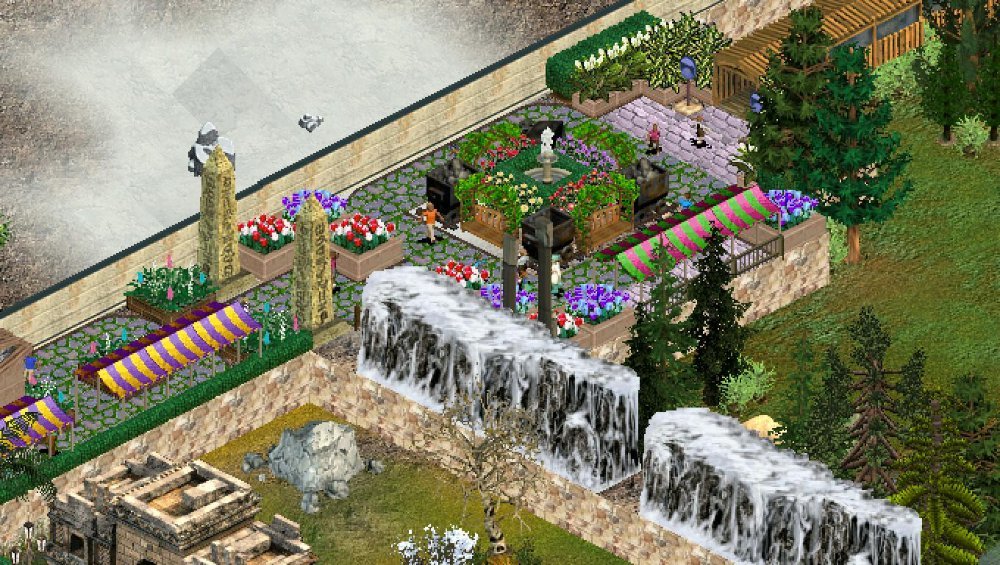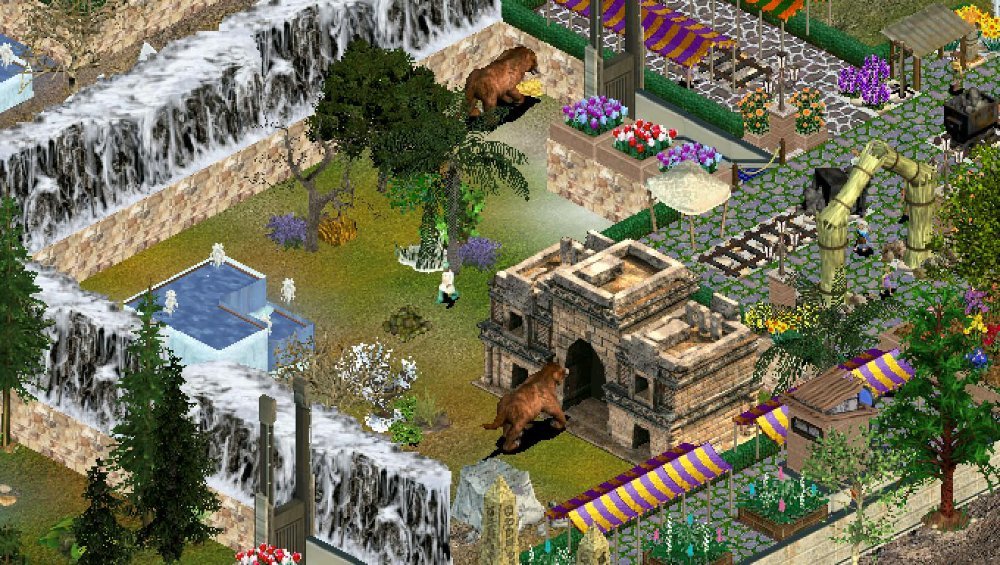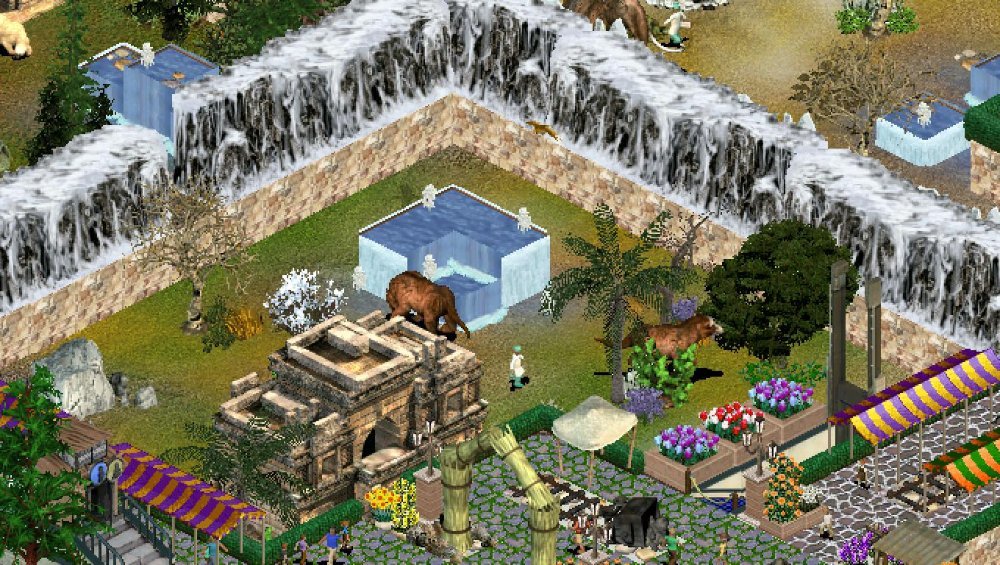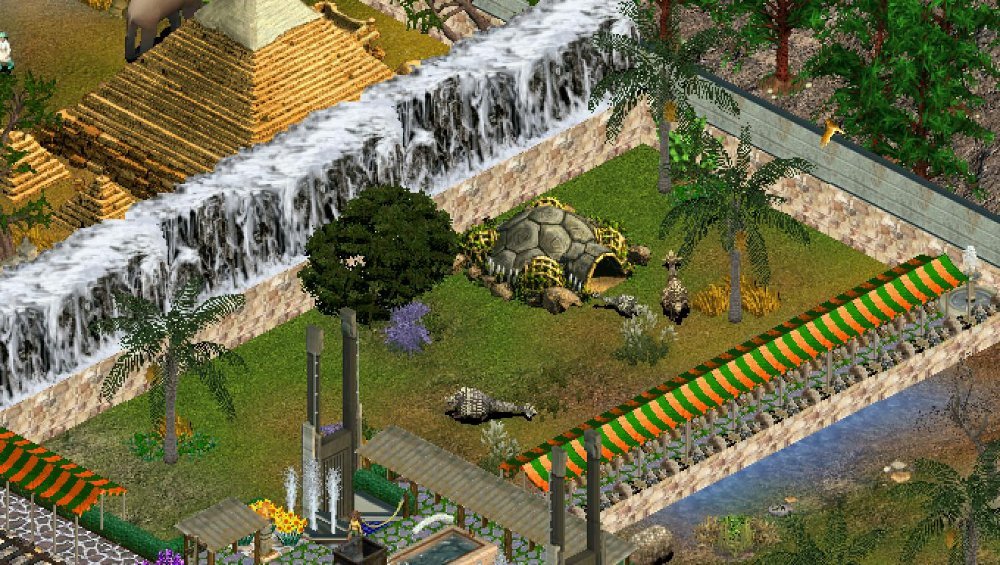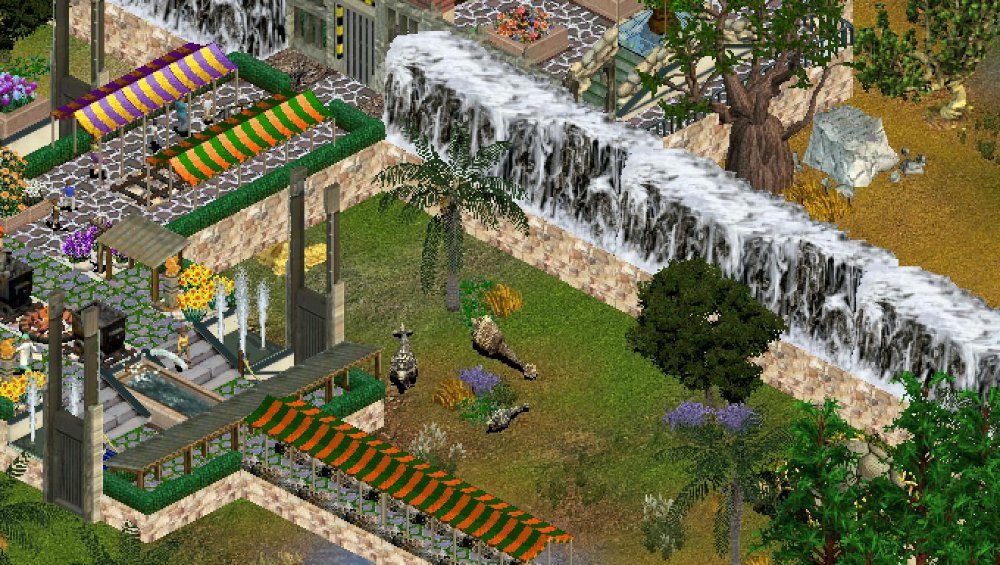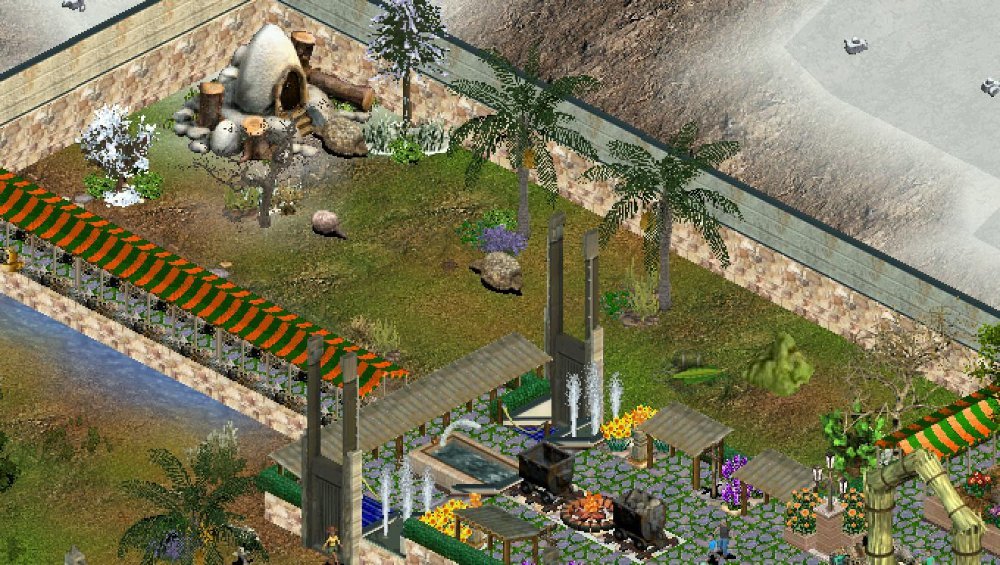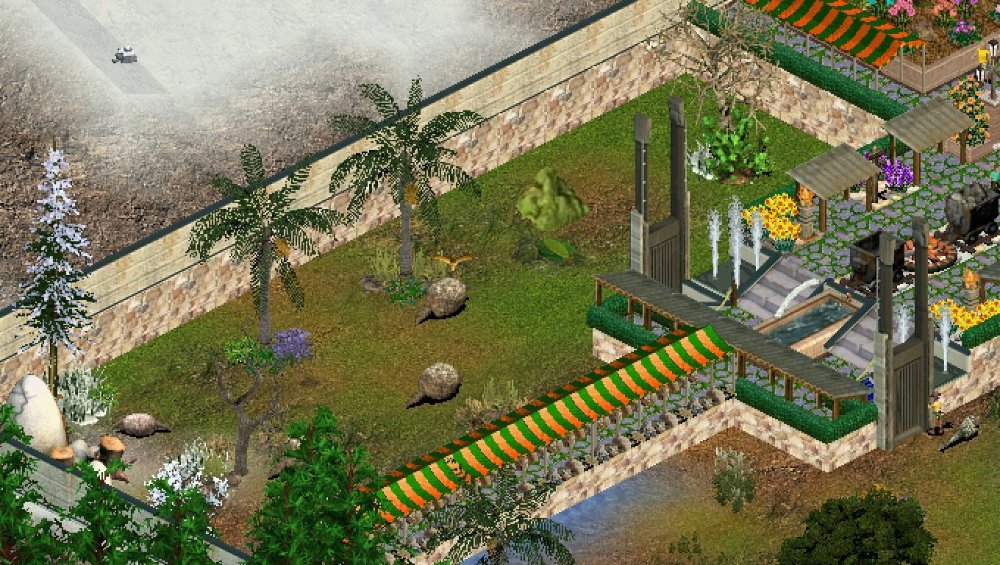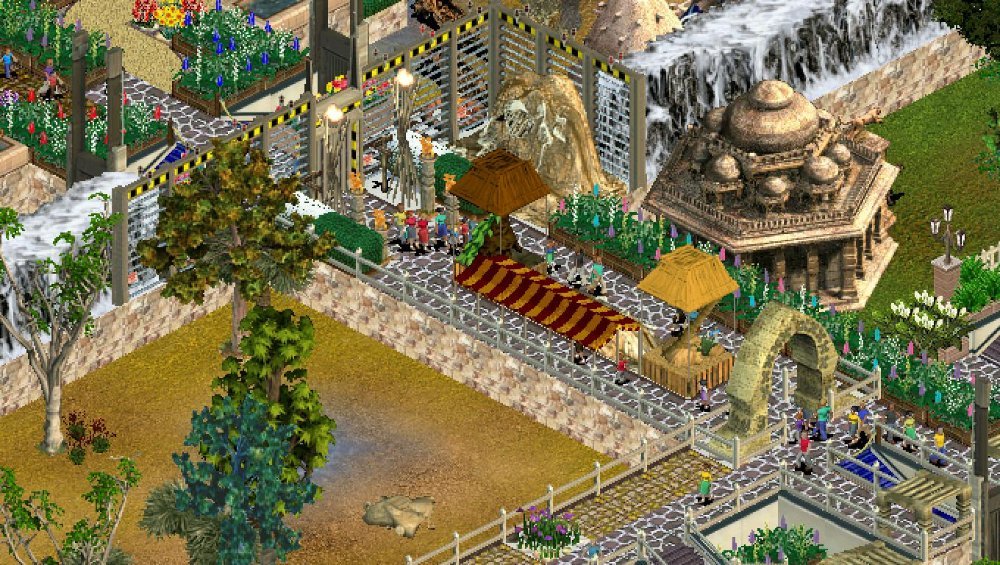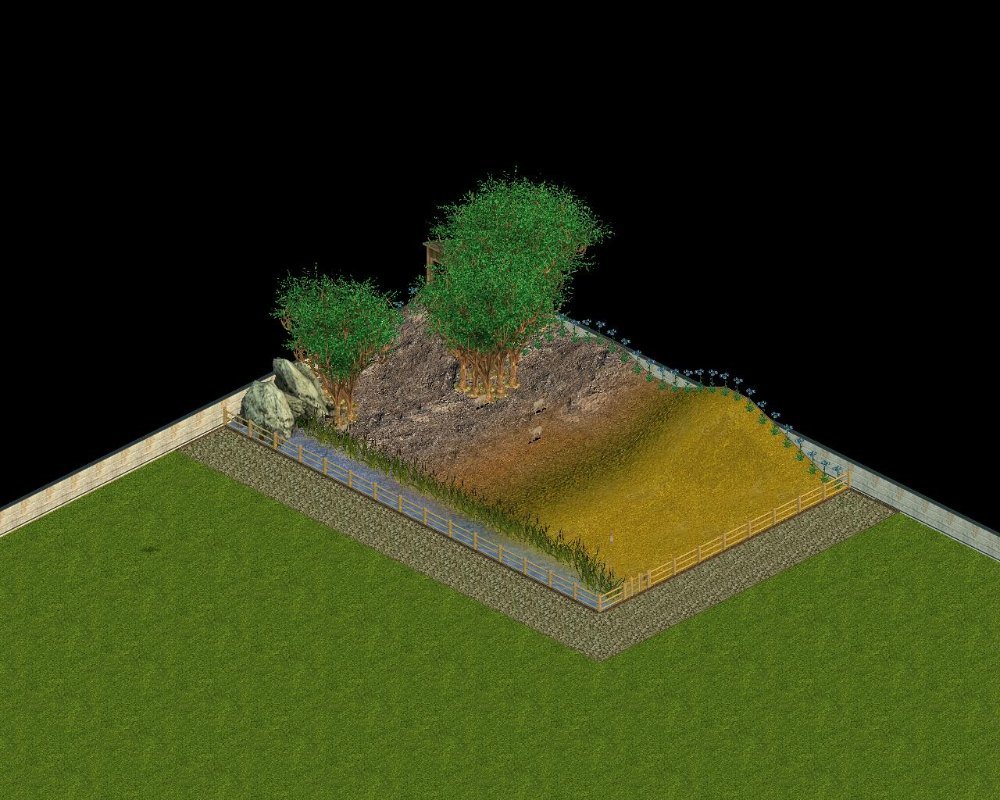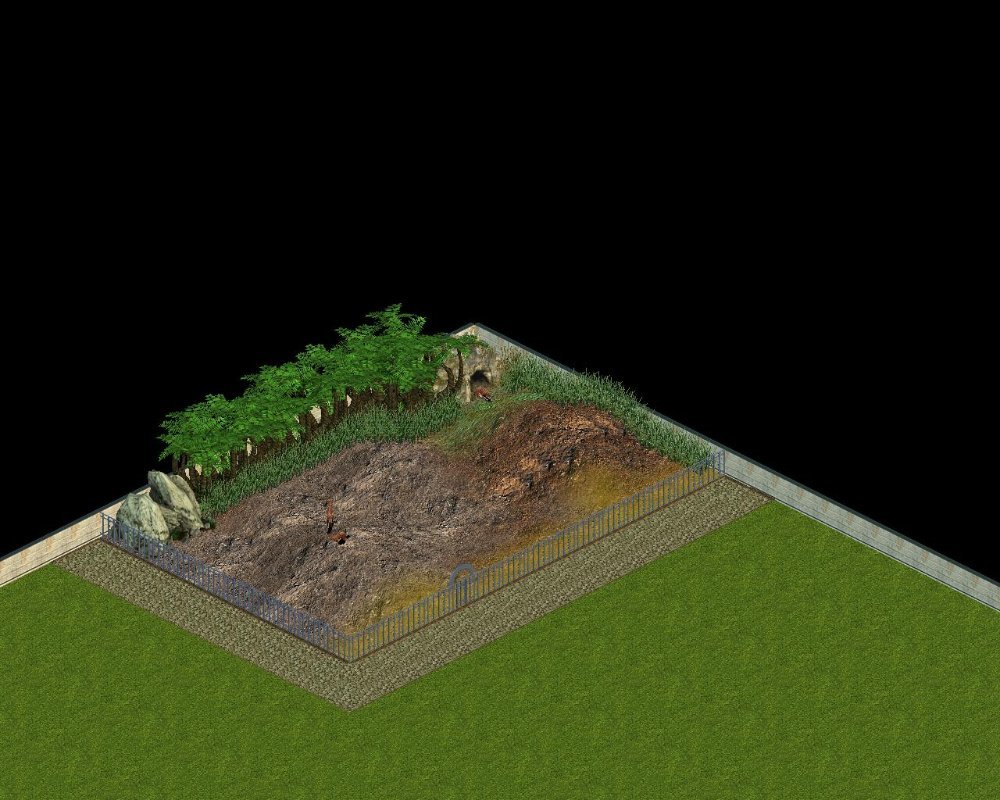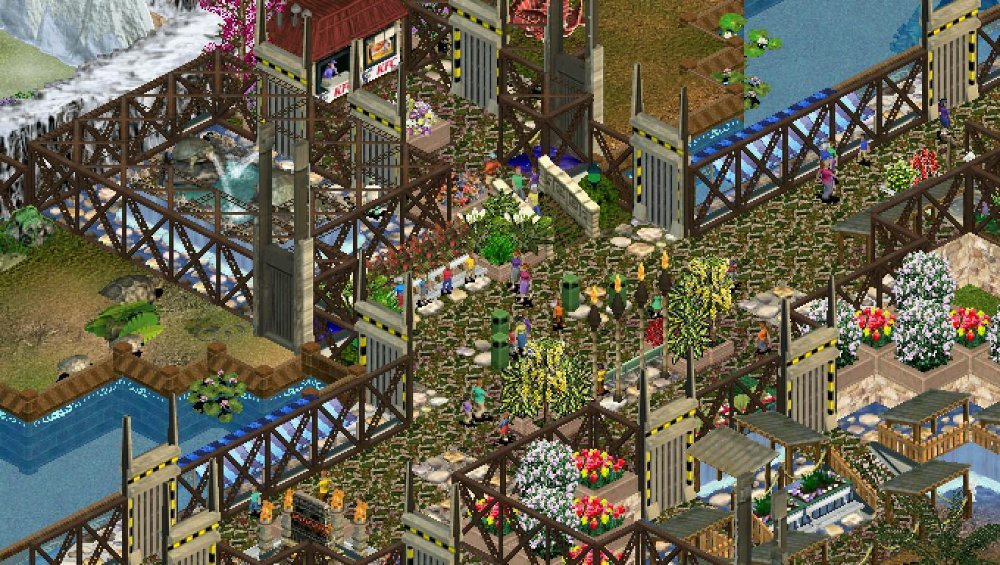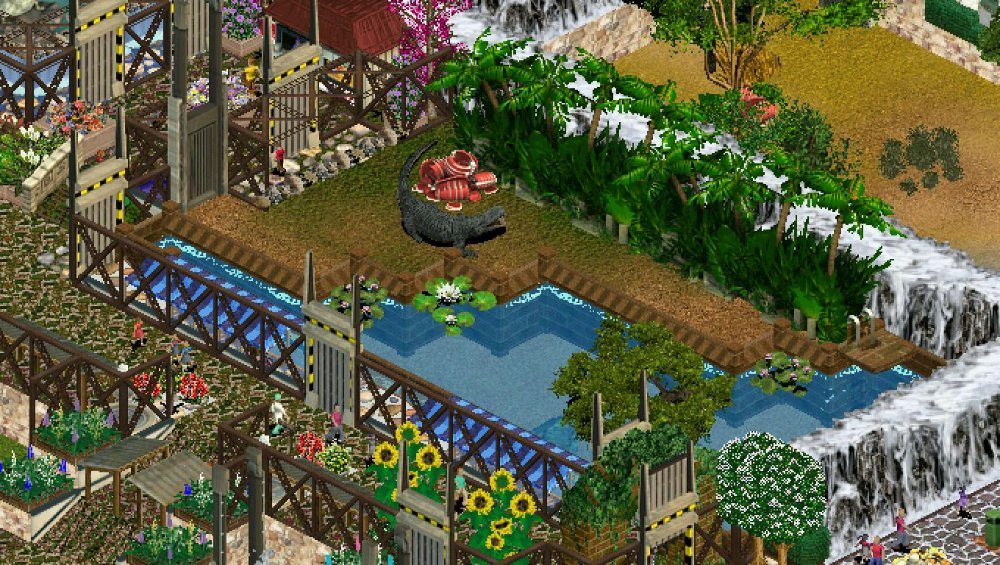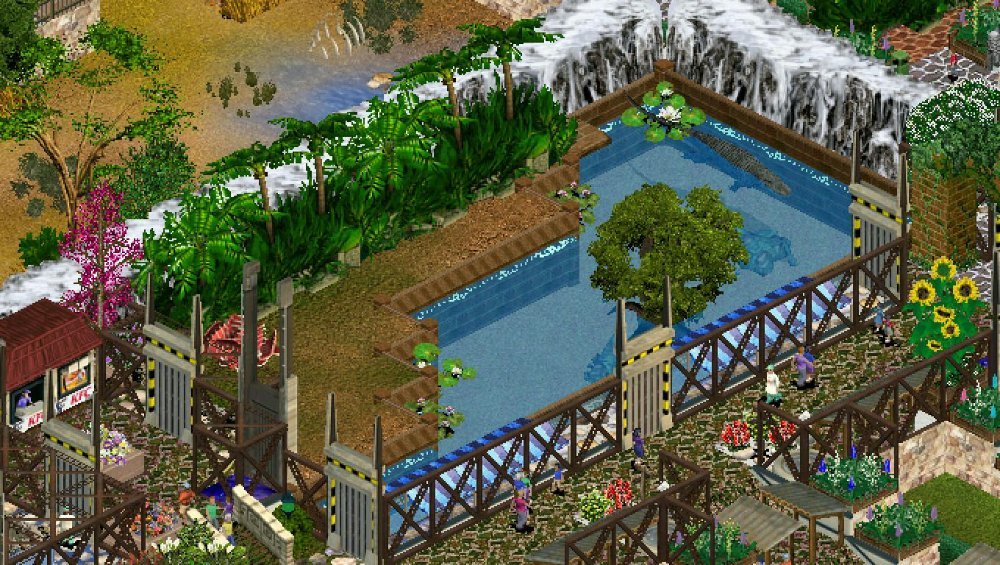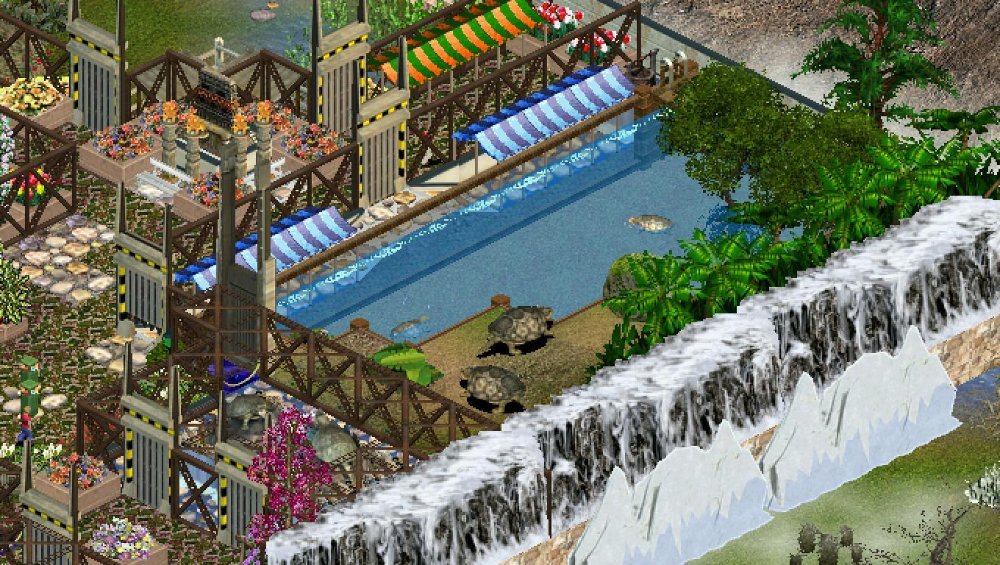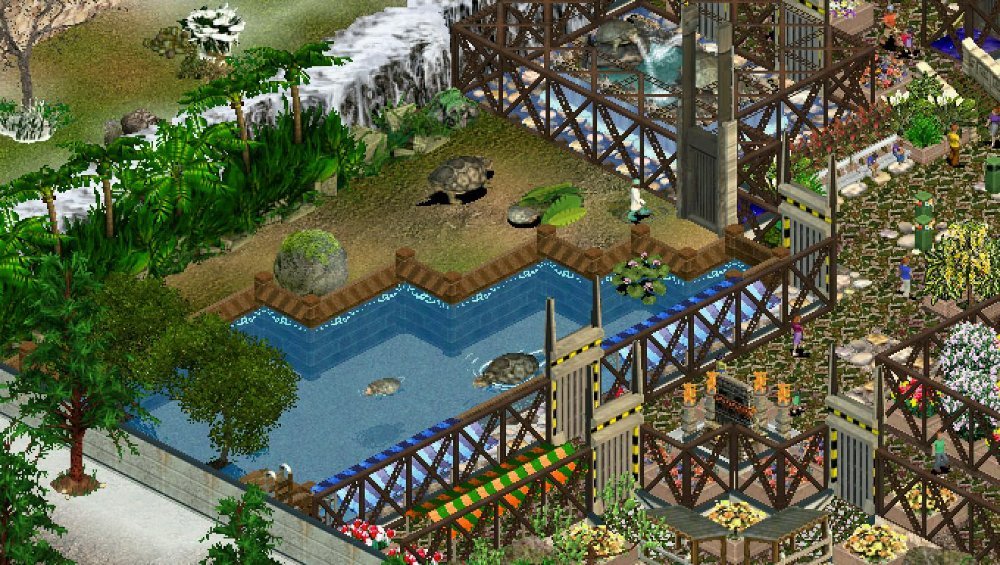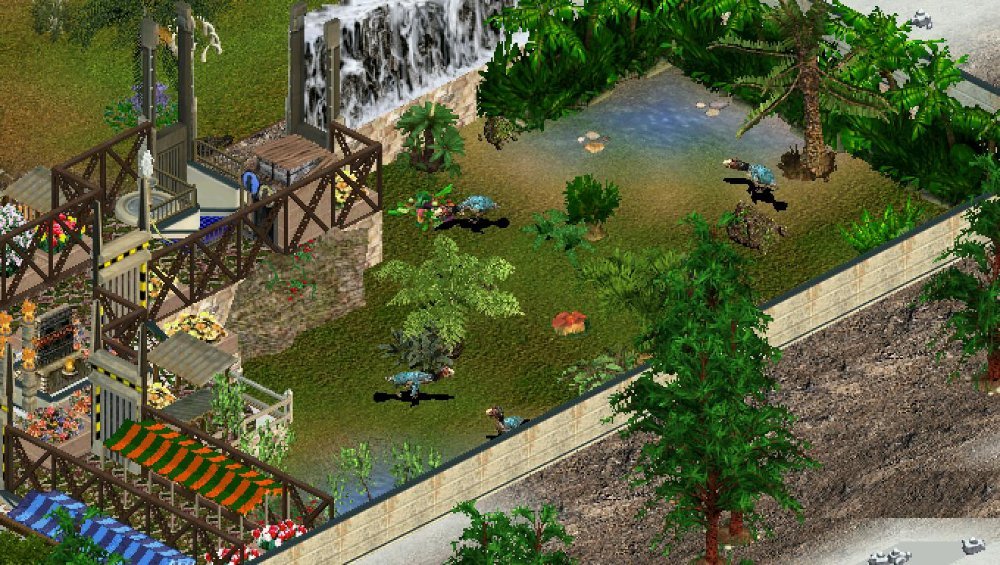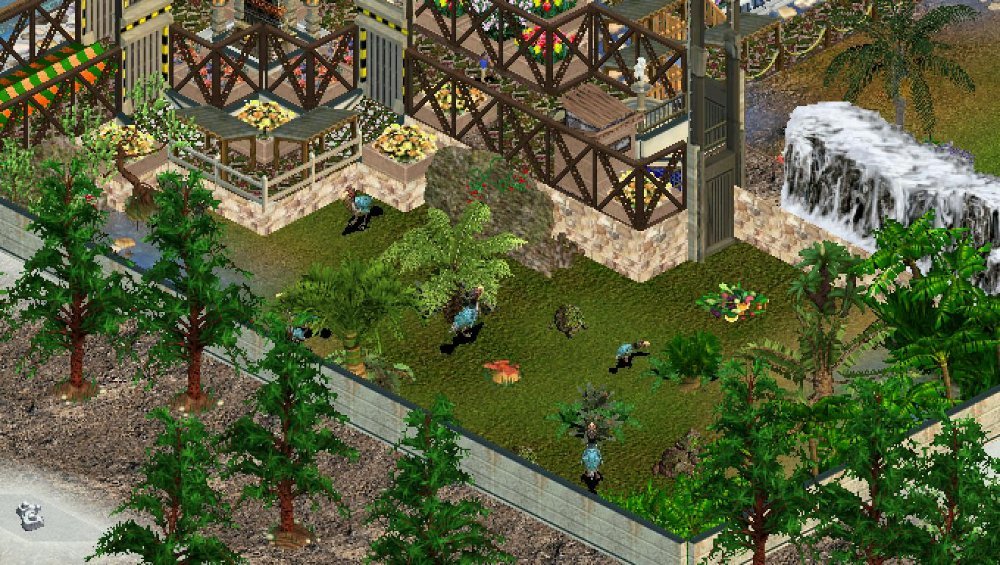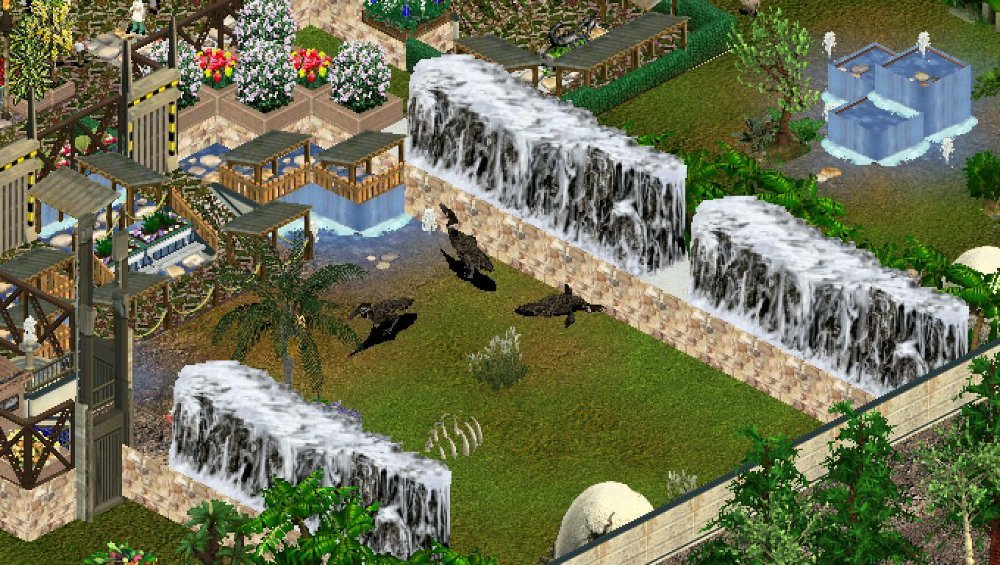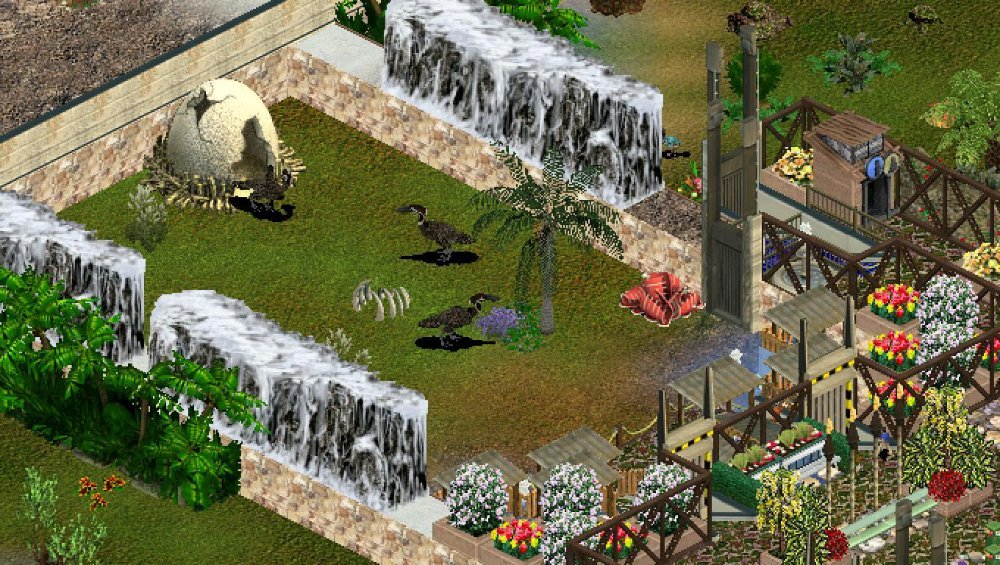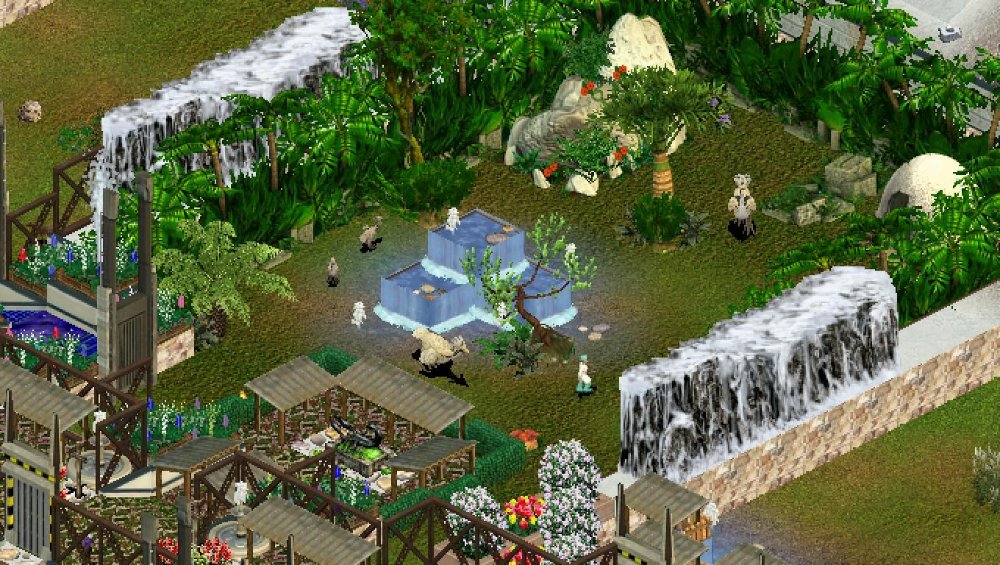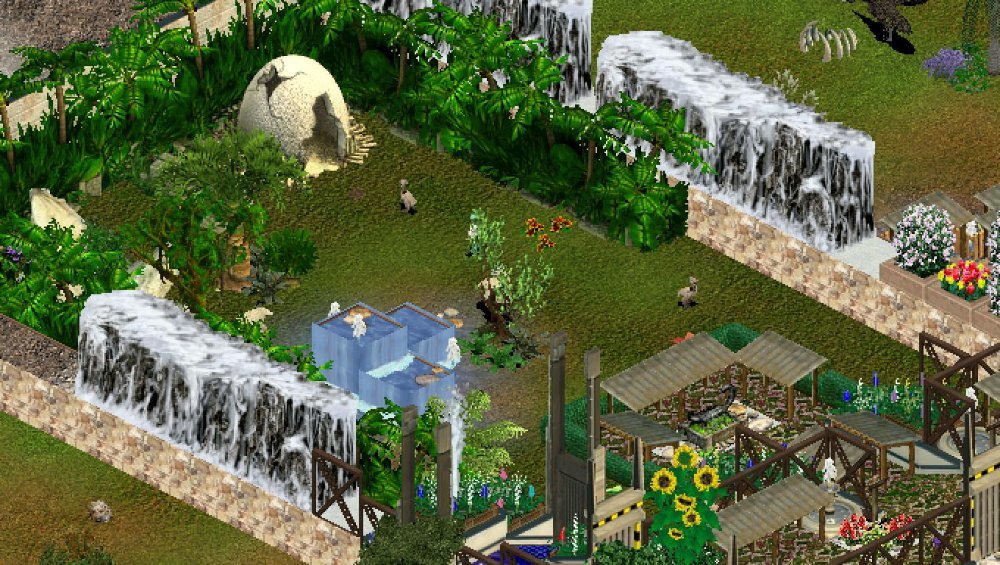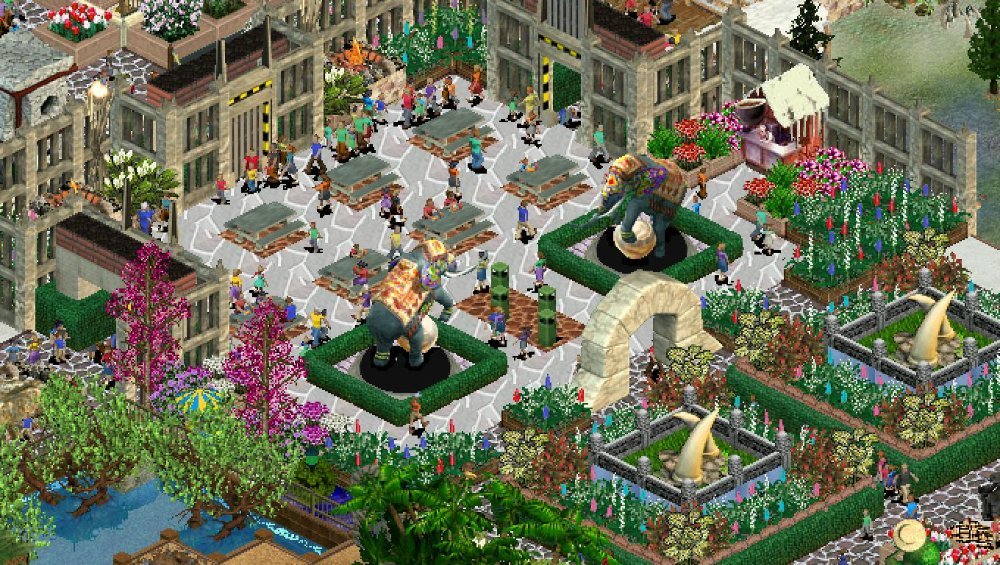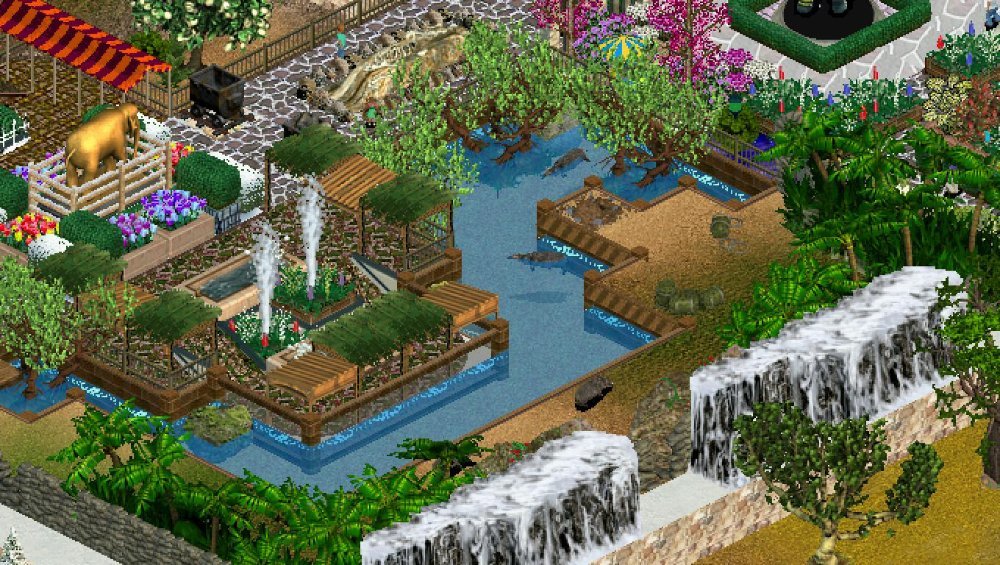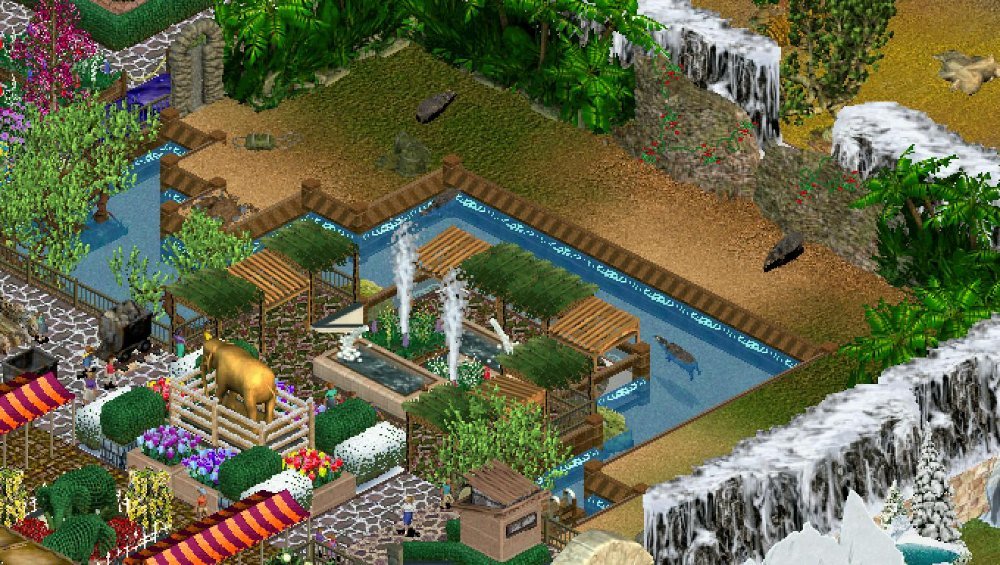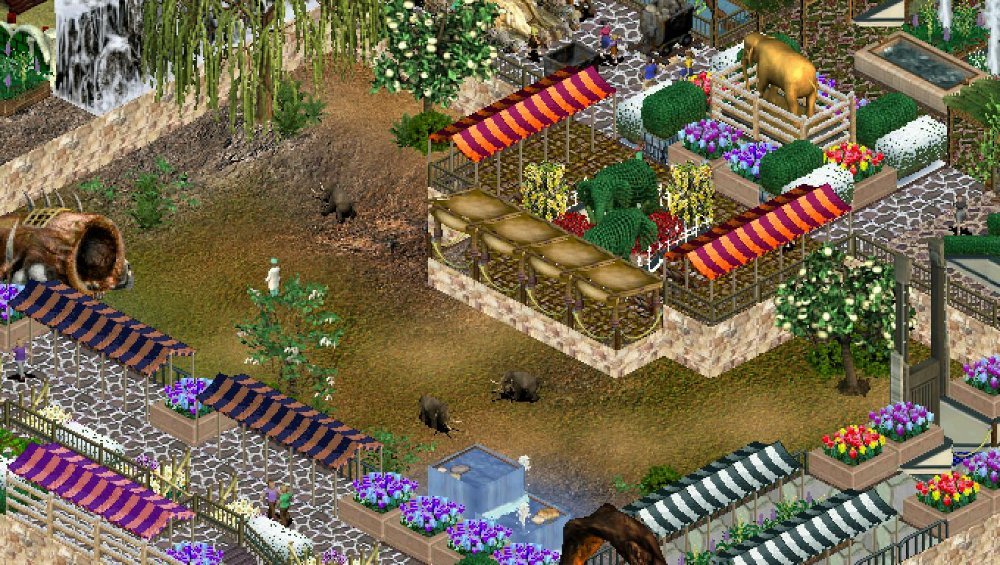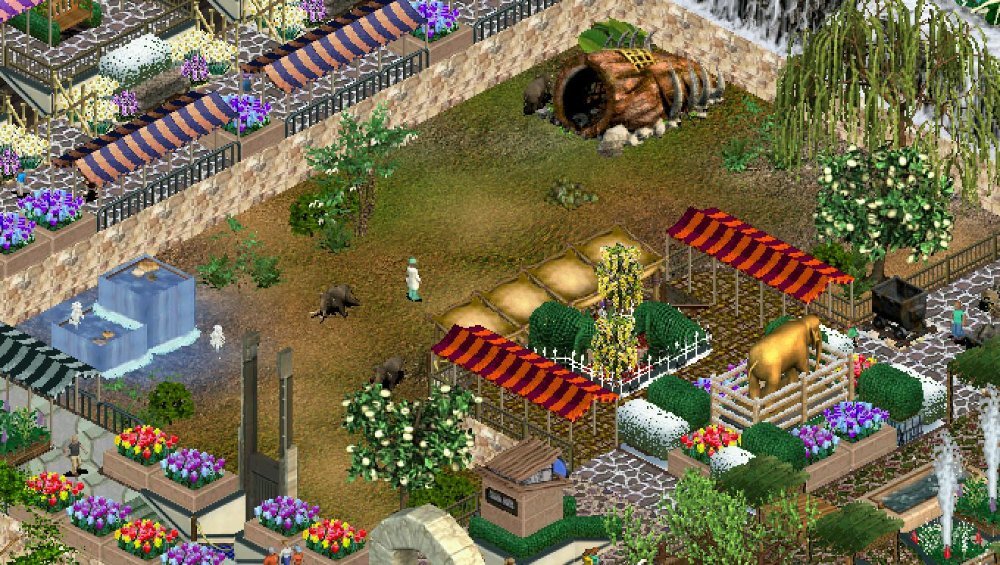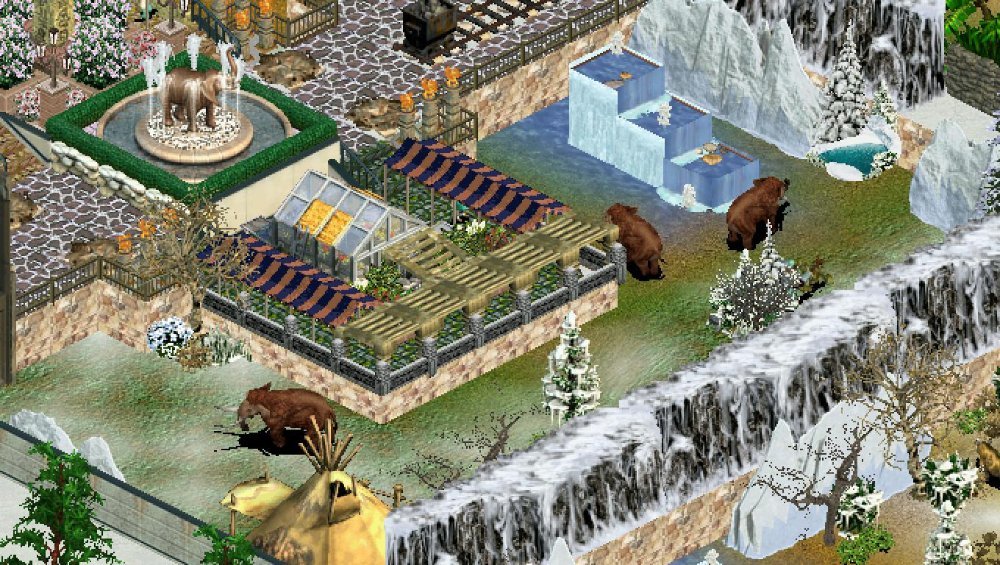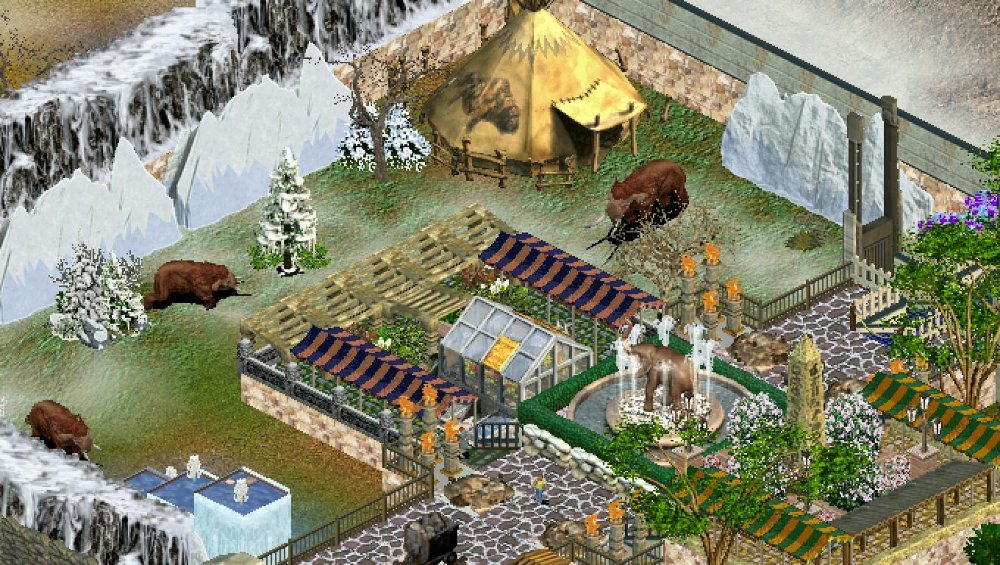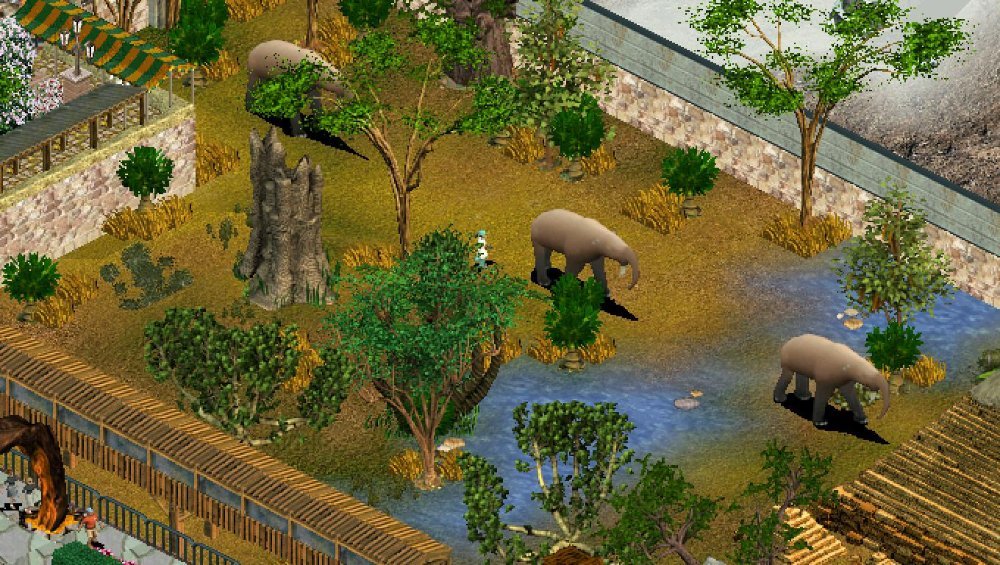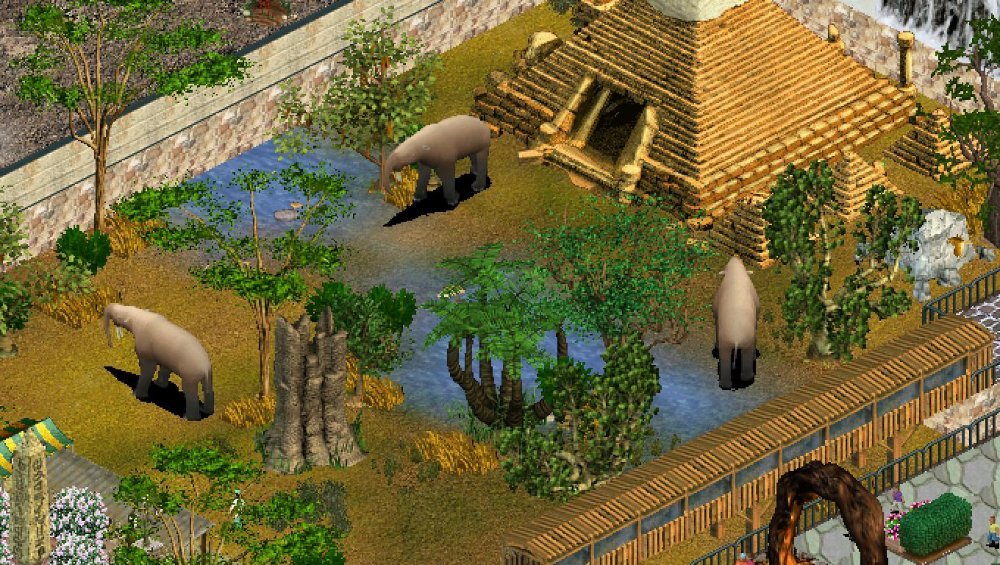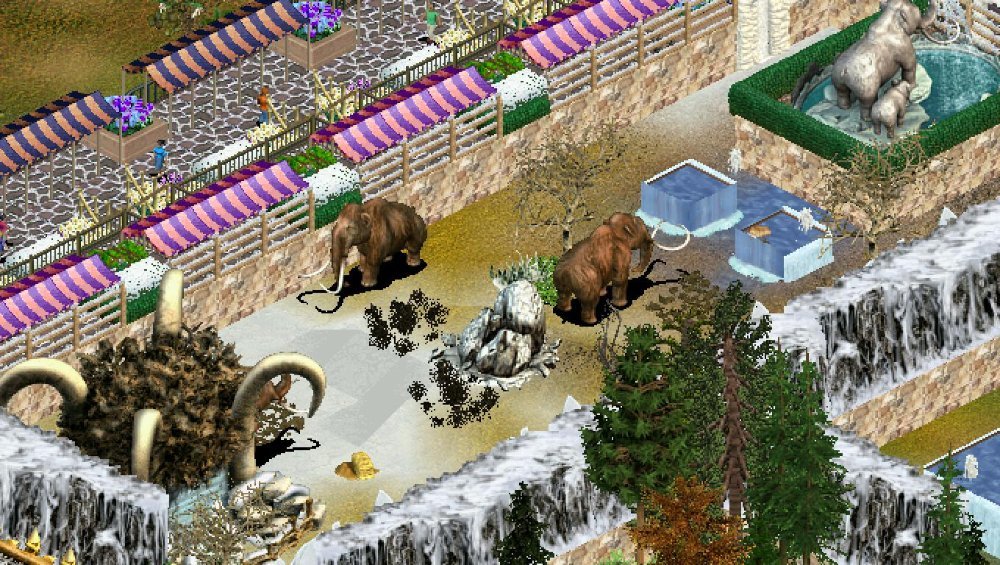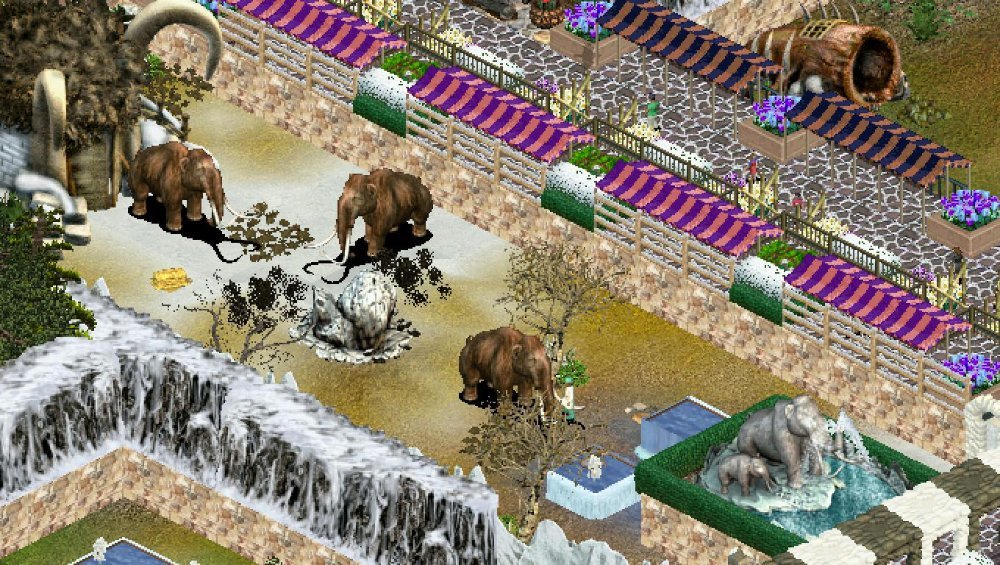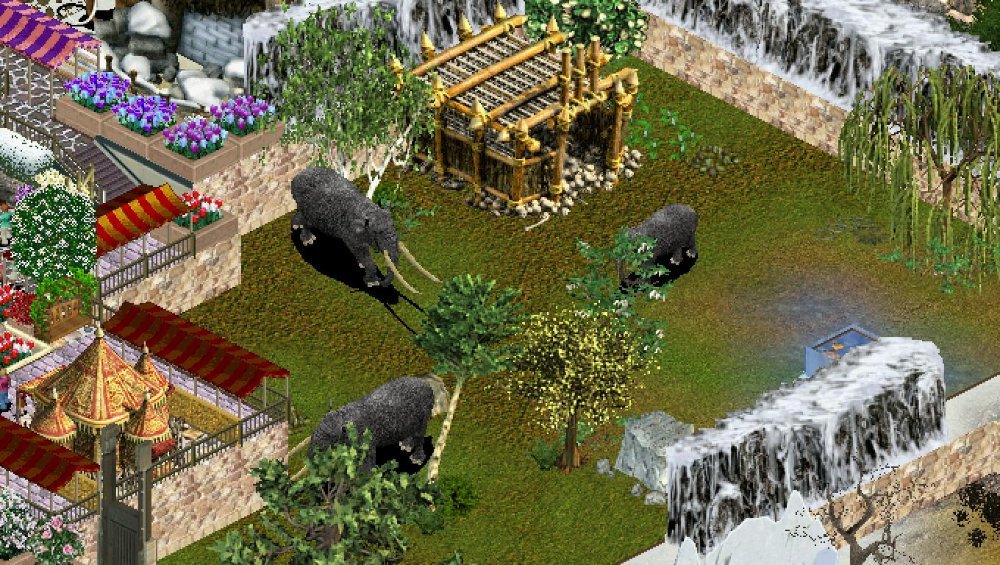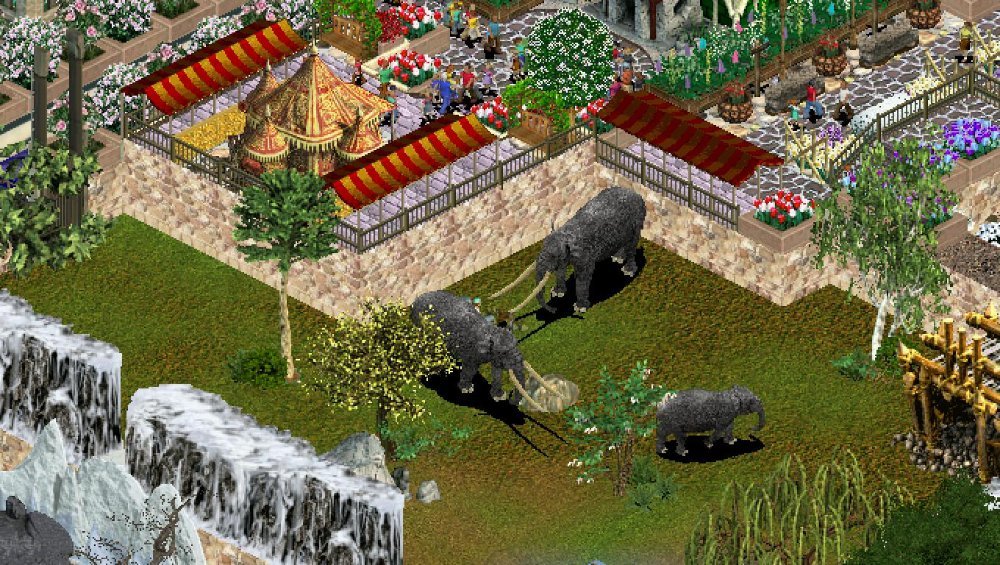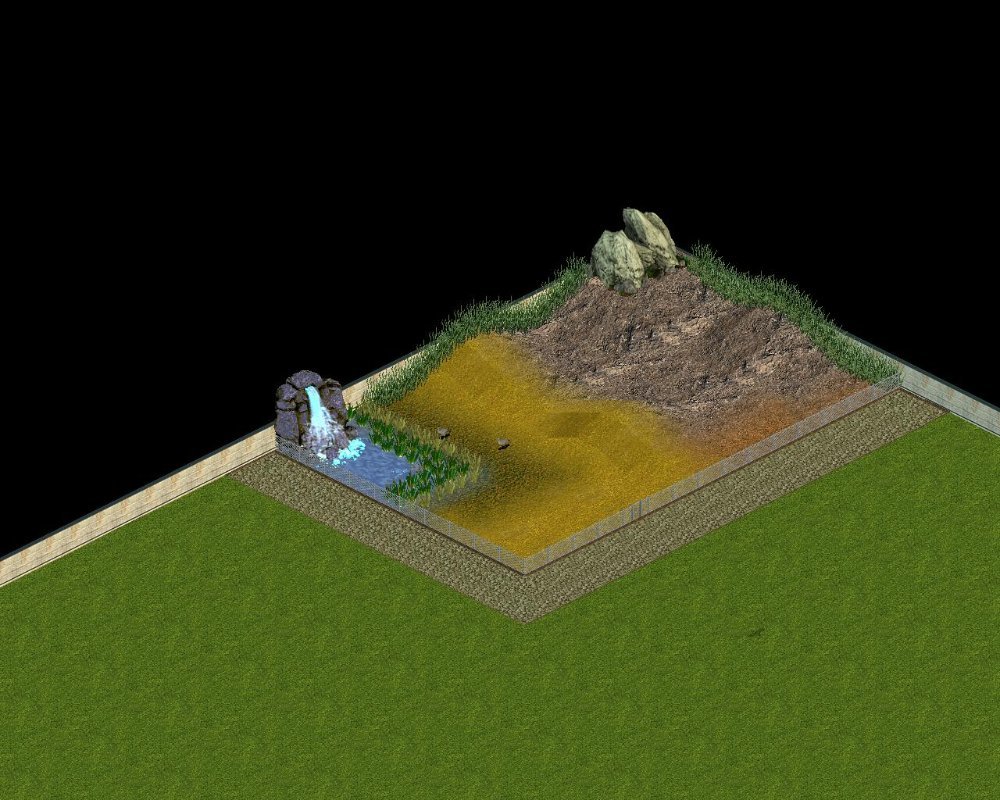Leaderboard
Popular Content
Showing content with the highest reputation on 06/23/2022 in all areas
-
1 point
-
The fence bar go buzz-buzz and the electric gate roars a noisy swoosh as it goes upwards over your heads. You walk across the electric gate, shoulder to shoulder next to Luca, as you feel how your hair bristles like an old broom. A second swoosh rumbles at your back and you know that the electric gate is already closed again when a click hits the ground, smashing the air against your bodies, so returning the hair to its initial position. - You'll see - explains Luca -, the bulky gates contain the proboscideans and the big cats far enough, but the electric fences are there because I'll show you to the biggest projects from our work. They contain not just animals in case of a breach, but also contains vistors with unusual intentions, do you get it? That's why the access is regulated at three points across the park, two of them separated with bridges, and this is the only one with an actual path because of the transport of nourishment for animals and resources for building. Beyond this first gate, stands the Ancient Predators Memorial. In addition to the cats and the Lost Ponds, we have here some of the biggest ancient predators ever. We got some dinosaur fossils in order to remember the ancient predators that once walked across the land! Do you remember Gastornis and Kelenken when I mentioned that birds are actual dinosaurs? Think about those Velociraptor or this huge Tyrannosaurus all covered in feathers! The depiction of them as massive lizards is not that accurate according to modern studies. - On this first side, we got Arctodus, also known as the short faced bear. This short snout is an interesting adaptation for a bear! Their teeth were adapted to chew bone, so they can eat marrow. This, in addition to its size, is what gives its definition as an scavenger! Think yourself as a wolf with your comrades, and you watch this bear stealing your prey! Would you dare to face it or just leave and find another meal? Talking about bears and meals, look at that silly polar pal! May you guess my favorite ice cream flavor? - Next to them, another predator gives us its best smile! Hyaenodon is not even related to actual hyaenas, but the most interesting thing about them is, again, their teeth! They rotated on themselves as the animal grew older, so they were always sharpened! Actually, the teeth closer to the jaw junction were adapted to cut instead of chew like our molars! This gives them a better effective digestion process, making them the apex predator back to their date! - On the other side, we have the most difficult project ever developed. You sure know that Andrewsarchus is only known from the remains of a single skull and no more than that! At first place, we had a very long and humdrum discussion with the AMNH team. Of course we won't borrow that fossil so easy. We had to reveal about our past projects, so they lend them for our research about the biggest land mammal predator ever. We expect te AMNH to keep our secret just enough until we have the information about Andrewsarchus so we can know what kind of predator was it! - Don't let you be fooled by these animals names! Despite the suffixes meaning "tooth" and "lizard", very often used for dinosaur names, these two were actual mammals! These two ancestors of modern whales shared time and place at the ancient Tethys Ocean, where Dorudon was hunted by the Basilosaurus in a very interesting trophic relationship! I dare to say that actual orcas are better predators than sharks! The ancient whales program will contribute to research about modern whales communication and how it developed through evolution. - Now, we start the biggest zone of the park! in comparison with others having up to five species each, Road of the Giants harbors six different species, just like MegaTusk Plaza! Again, some of these might look like modern species with which they share no relationship. For example, this one looks like a sloth with a horse face, but is no related to any of them! Chalicotherium belongs in the Perissodactyla group where are found horses, yeah, but also there are gathered tapirs, rhinos and lots of extinct species, whose evolution trees are quite confusing to date. - Right in front of them, another Perissodactyla member, by far different! Brontotherides are some of the heaviest animals you'll ever see. Some of them may resemble about rhinos, but their horns are bony, in contrast with rhinos', whose horns are made by keratin. Yes! Just like our nails and hair! Embolotherium hadn't an actual horn, but a sort of bony shield that gives it's name of a beast with a ram! This plate doesn't seem like a sexual character, but their noses have some chambers that allows them to emit call sounds! - But the actual Brontotherium catchy name you sure remember from old documentaries is no longer! That animal got discovered several times throughout history and, among several names given to them, the first and valid one is Megacerops. These brontotherides have a "v" shaped massive horn in the tip of its nose. Males used to fight each other using them as their weapons! And yes, the name Brontotherium went unused, but the group of brontotherides keep their name. Sure these beast made thunders! - NEVERTHELESS!!! If you want to talk about really huge animals, definitively the jewel from the crown goes for this! Do you remember when I told that Deinotherium was smaller than just a few species? Well, this one beats them all. Despite being close related to rhinos, Paraceratherium had no horns on its face. If Aepyornis is the biggest bird ever and Andrewsarchus is the biggest land mammal predator ever, Paraceratherium is the biggest land mammal ever recorded! Those legs are like enormous pillars supporting high that body! Up there, indubiously no contestor might defeat Paraceratherium when looking after feeding! - Next to Paraceratherium artificial habitat, we erected a tent we call "The Clockworks" where several devices found on our excavations were put together in some weird plastic art museum! Give it a peek! Then, go greet the next neighbour at the Road of the Giants: Uintatherium. It also had several names before its official recognition. Sure, several old paleonthologists were exultant after a plant eater this weird, with saber tooth and several horns. It's like a chimerical rhino! It's actual evolutive line is disputed, so its research will make this mess clear! - The last member we'll meet at the Road of the Giants is a whole inca icon, just like terror birds, Thylacosmilus or giant sloths! Macrauchenia is, again, a weird specimen which looks like a messy merge of several species with no relation with any of them! Their shape reminds a humpless trunked camel with the hindlegs of a rhino! Their forelegs were actually like those from a horse, propounding several questions about its behavior of a runner or a prowler. Next to this exhibit, you may find the second electric gate that leads you next to Titanotylopus and Aurochs exhibits. - We're almost at the end of our journey. At the penultimate area we find the AquaTerrariums. The main feature of Arsinoitherium are those four horns. Yes! Four horns! Behind those frontal massive horns, a second pair of tiny horns is placed near the eyes! A total surprise was the fact of Arsinoitherium having some aquatic habits! All evidence to date supports that they were fully terrestrial. We also believed that fact, but some information is not available just in fossil record. I bet that, If we keep restoring extinct species that we assure to know at all, we'll find several features we are not aware of yet! - Usually, for terrariums, people tend to pet snakes. Ironically, the second AquaTerrarium is the place of a family group of Josephoartigasia which were actual rodents! You may think about them like beavers, but they were related to capybaras, the modern biggest rodent. Josephoartigasia were the biggest rodent ever! We're breaking records today, aren't we? Hahaha! It's believed that these friends went lost and extinct after the american interchange, when exposed to new predators and other species trying to occupy its ecological niche. Their research works after that goal. Did the biggest rodent ever go extinct due to that or was anything else? The AquaTerrariums are as relaxing as the gardens at the other corner of the park. You see a long road with a wet theme where you may take a seat and let you get involved with the sounds of the sparkling water. You've spent almost the whole day at the Thawed Out Park next to Luca and Parvati, but it felt like a whole eternity. The sun is almost ready to go under the blankets far away on the horizon of Himalayas. When you notice yourself in front of Poseidon statue and it's shadow grows long across the floor like a clock hand, your throat mutes and your guts churns under some weird nostalgia. It's like a premonition. You know that all of the animals at the park will be safe under the care of the research team, but a little piece of your heart beats like if they were going to be extinct again at the end of the day. - On the fourth and final corner of the zoo, we have a close relative of ourselves! Some of our researches call them friendly "the actual Yeti". You know... We're at the Himalayas... By the way, none of our expeditions or excavations found something related to that Yeti. Well, with nothing else to say, let me introduce you to the Gigantopithecus, which was also a hard work because its remains are almost just teeth! We found from them several things we were expecting. They resulted to be pretty similar to a huge orangutan, walking most time on the four limbs. - And, finally, the last project developed at the Thawed Out Park might be quite controversial for modern science. We achieved a successful restoration of the ancient hominid Australopithecus. We had several ideas for understanding of modern species looking back to their ancestors. Why not also humans? I know... Australopithecus were more like apes than actual humans. But, when did the ancient hominids became humans? And how? Anyways... I'm several things, including something of a scientist myself, but not an antropologist, nor a philosopher. THIS is what I call a true breakthrough as it opens a whole world of questions waiting for answers to be written! - This is where our journey reaches it's unevitable end. I'll leave you here. This is PrimEats Place, the only restaurant in the whole park. I'd like to stay and share table with you, but I'm now working on more projects, so I gotta go. Take a look at this plaza and wonder what am I building now! You know that all costs are on me as long as you keep that card around your neck. If you take that electric gate next to the Australopithecus exhibit, you'll be back at the Antlers Hanging Planters. You can stay on the park as long as you want, but the night is near and it will be pretty chilling! It was nice to be your guide today. I'll send you letters more often! Keep having a nice day at the Thawed Out Park, where enormous astonishments await for you! Just after the waiter takes your order, Luca Abbott gets lost from your eyesight when he walks outside from the restaurant at PrimEats Place. You throw your gaze across the window, looking after him, when you notice something strange. You are sitting in a place where the park provides you food, and the whole plaza is sunken and surrounded by fences, containing plants and all you need to be confortable, just like the other exhibits. At your right, the Gigantopithecus chews bamboo stems, and at your left, the Australopithecus pries on some stones near the water pond. Is this another zoo atraction that tries to merge you into the park experience itself, or is some kind of message from the park designator trying to remember us that humans are no more than other species on Earth having a period of time that will eventually run out, like those 50 on the park? Wait! Luca told that the park has 50 species, but you didn't even count them during your travel! Let's see... Elasmotherium was the first, then you saw Coelodonta. After that came Entelodon and Metridiochoerus... Oh look! Your order is ready!1 point
-
1 point
-
1 point
-
1 point
-
1 point
-
1 point
-
1 point
-
1 point
-
What's going on up there? Luca is having a nice time with a woman who dresses a lab coat right in front of the Tea House! You can't hear what are they talking about, but you notice how nice is their chat because they can't stop laughing! When you're close, Luca comes towards you and then introduces: - Oh! There you are! I'm eager about showing you what's there behind the third bulky gate! You three, standing there, quit talking. Just the Stegodon trumpet breaks the silence. - Sorry! - breaks Luca - Let me introduce you to this gorgeous lady! This is Dr. Parvati Kerr. She will tell you a few things and will join the tour for the next zoo area. - Nice to meet you! - says Parvati - Luca has told me several things about you! Are you enjoying the park? I bet you do! You start walking across the bulky gates. She stops right in front of a building. Parvati explains then: - Sure you've already seen the Thawed Out Park zoo map. Didn't you? - inquires Parvati - If you did, sure you wonder what is that hotspot pointed as "G. A. T. I. C. O.". Let me explain. These are the research team headquarters. All you see and all that became the Thawed Out Park started some time ago with my team of coworkers. The GATICO acronym stands after Guidance for Ambiental Transition for the Introduction of Cats Observatory. Our first objective was the restoration of some lost and endangered cats like barbary lion or sumatran tiger. Nevertheless, call it serendipity or whatever you want, our breakthroughs drove us further, to the restoration of extinct feline species. - GATICO now works as both the main lab for extinct species clonning and as a museum where guests may get information about the conservation of endangered and extinct feline species, and its name is the spanish word for "kitty"! - explains Luca - Dr. Parvati is the leader of the GATICO research team. I'd like to show you our facilities, but the staff is quite jealous about their work. However, you may take the museum tour. The souvenirs include cat themed glasses, so you can then after go to the photo booth and shoot your silliest angles! - During our first prototype tests, we found that our method had a small posibility of restoring even older species - explains Parvati -. So, we developed a pilot test which, after several attempts, successfully brought back the extinct Cave Lion! A feline species that went lost when more efficient predators, like wolves, appeared across Eurasia was now almost walking again at our facilities! We had a short discussion about halting the experiment right there, when we noticed about that chance of demonstrating if Cave Lion was a subspecies of african lions! That study conclusions just came to reinforce the most recent research about Cave Lion being an actual independent species! - With these results, of course we would try a second time! The following GATICO research program restored the ravenous Homotherium, an extinct feline that gave us interesting discoveries! Homotherium has a quite unique feature: Theit teeth were flat and had a serrated edge, being the reason of its common name: scimitar tooth cat. Those lethal teeth, in adition to its body shape is what give us the depiction of a mammoth slayer. When we ran the Homotherium project, Luca and I haven't met yet, so mammoths weren't in our plans. Despite being plausible, we won't make a clash test between my cats and his mammoths. Homotherium voracius nature will remain in mystery... They look suspiciously peaceful, so we don't want to dare them! - With two restored extinct cat species, my team toke part of a more ambitious project. The best known ancient cat species is obviously Smilodon, better known as saber tooth cat. Despite what you may think when you see them, its name is not due their huge canine teeth! Their actual "knife teeth" are their incisors! We expected the Smilodon restoration project to be quite long, but the remains were in an spectacular condition that allowed us to recover this cat faster than we tought on first place! And that's not all. If you paid attention to the GATICO museum tour, the modern clouded leopar has the widest jaw aperture, with around 90 degree. In order to use those huge canine teeth, Smilodon's jaw aperture reached 120 degree! - The last extinct species below the GATICO's surveilance is exceptional, as it is not an actual feline, but its program is aiding in the understanding of modern and ancient cats behavior. Thylacosmilus is not an actual feline. Actually, the puss at your home is closely related to Smilodon or Homotherium unlike this one, because Thylacosmilus is actually a marsupial. Yes! Like kangaroos or possums! Our team chose for a non feline animal for our fourth project so we can uncover several things about their evolution, because most of Thylacosmilus habits aren't preserved in extant species. Also, their teeth are incredible! They grow lifelong and start over their eyes! Thawed Out Park's logo is intended to be the huge teeth of the four projets that started it all before the eventual 45 new projects! - When the news of a non feline extinct animal project by GATICO researchers came to my knowledge - starts Luca -, I made my first trip to Kathmandu where I met Dr. Parvati for the first time. At those days, I was working on the previous park I already showed you. Yes: The Aussie Tour Park. We spoke about bussiness and we got an agreement: I'd found their research if they let me and my team to do research at their facilites. So, I toke their fifth proyect of a cat like extinct species, so I can introduce it at my Australian theme park: the Thylacoleo! My team used GATICO installations and procedures and we achieved our first goal! - After our first research program together, we kept talking. A new project started, followed by so many others and... Now we're here! The second restored australian animal I brought to Aussie Tour Park was Diprotodon. And sure now you wonder "Wait! You told that Thawed Out Park doesn't work on dinosaur research, but at the Aussie Tour Park you have both Muttaburrasaurus and Australovenator... How is it then?" Hahaha! Of course I toke also Meiolania from Thawed Out Park to Aussie Tour Park, but the dinosaur projects are my tiny secret! I'll tell you later! - It was nice to attach your trip on this small piece of a huge road! - says Dr. Parvati. She stands right in front of the Aussie Tour didgeridoo store - From now on, I let you keep your way just you two! GATICO children, and with children I mean the staff themselves, need their babysitter back again, or they start to fool around and quit working! Anything you need, you know where to find me! Until very soon! - We're now at the second corner of the park -begins Luca when Parvati leaves your eyesight meters away, on a path turn -. On this side, you won't deal with bothering noisy food stands or smelly ugly to see trash cans. You may take that bridge and enjoy the Relaxing Gardens! The wind caresses the planters and the slow movements of the animals dwelling there. Let you drown in the peace of the silent spot of the park! The bridge arises above the exhibit of Scelidotherium, the first sloth of the Relaxing Gardens! This sloth differentiate from others by its narrow head. - These sloths have historic meaning! Scelidotherium first remains were depicted by Charles Darwin itself during his journey across South America! Unfortunately, he assigned Scelidotherium remains to another species. On the other hand, the second sloth below the bridge in its small snowy woods was depicted by the former USA president Thomas Jefferson! That's why Megalonyx is aslo known as Jefferson's ground sloth! Its official naming toke place almost 30 years after that and Jefferson named Megalonyx before he reached the presidential chair, but to cultural significance, is an ancient species "with a presidential link". - But close to Megalonyx and Scelidotherium, the largest of these sloths was, indubiously Megatherium, also perhaps the most popular and better studied from giant sloths. This fluffy pal, due to its enormous size, had almost no competitors in the food race. We have almost no interrogants about sloths diet, but there are so many theories about these beasts being scavengers. And that might be possible, but about scavengers we'll talk about later! - At the end of the Relaxing Gardens, we have two more friends. They're not that big, nor that fluffy. They're armored instead! The first one resembles a bit of dinosaurs like Ankylosaurus or Euoplocephalus, but it's actually a mammal related to modern armadillos! The main thing about Doedicurus is its thorny tail. We're on or way about finding if that armoured tail is some sort of defense against predators or if males used them in combats during reproductive season. - The neigbour and the second corner of the zoo is Glyptodon. They also had an armoured tail, but instead of a club mass, theirs is covered by bony spiked plaques! Have a rest at this area until you're restored! I'll be wating for you near the Thylacoleo exhibit! We're finally going across the electric gates! So, mind yourself for the last part of the journey! When Luca leaves, you take your time to go and sit next to the Megatherium exhibit, next to a fountain. The sloth slowly stands and gently extends an arm, reaches a branch of a tree and pulls it towards itself. The tree trembles and finally jumps back to its original position when the claw rips the plant. The slot crushes the leaves within its mouth. The breeze raises a bunch of leaves in the air. The green and brown leaves falls across the path and finally two of them find their last destiny next to you. One of them is flexible and green, meanwhile the other one is fragile and brown. You wait for the wind to take those leaves alongside it, when the sloth does a second blow to the tree, blasting a new generation of leaves into the garden. The fountain is now full of dead nature like fishes and frogs having a nice time on a pond. You stand up and find your shoulders full of dried leaves and blossoms. As you take your way to the bridge, a third bump to the tree takes place, but you only hear it. - That was quite short! - says Luca when you reach the Aussie Tour souvenir store again - Now, we're just standing in front of the electric gate that safeguards us from a containment breach on the other side. Do you wanna know now?1 point
-
1 point
-
1 point
-
You're on your way across the hanging planters right into the tunnel that goes below the Eohippus corral after washing that sticky cheese from your hands at the restrooms. On the other side, on a leafy bench next to the Globe Bush, Luca drinks from a bottle of fresh water as he waits for you to come back. He swallows two times when he notices your walking, then he closes the bottle and stands up. - How is it going, my friend? - asks he as he approaches - Are you ready to resume the journey? Sure you've been sneaking a bit around. Sure you noticed an arch next to the Synthetoceras & Ceratogaulus exhibit. Do you wanna know what is hiding across those bricks and vines? Luca starts guiding you right back across the tunnel. In the darkness, he starts talking again. - At this point, I've showed you a few mammals that lived during the last eras, just after the biggest dinosaurs. Don't you wonder what happent to those titanic lizards? Or should I say "titanic birds"? Yes! We know now that birds living nowadays are actual and modern dinosaurs! In fact, the feathers came earlier as we tought, appearing in the dinosaur evolution in the ancestor shared between dinosaurs and other reptiles like those who flew! Unfortunately, dinosaur restoration is not that easy as for mammals, nor is something that the Thawed Out Park researches are interested about. However, we of course restorted few extinct dinosaur relatives from ice age! Welcome to the Lost Ponds! When he says this last words, you are now walking below the arch. This area looks completely different to the rest of the zoo. It's like a small rainfortest where the guests are caged and not the animals. Your boots feel soaky at every step you give through the path way. - As I told you, birds are ACTUAL dinosaurs, not their modern relatives. The modern dinosaur relatives are actually crocodiles! It is also known that crocodile cells contain feather genes, but they do NOT have the genes for feather making. Although, Purussaurus is not a croc, but a caiman, it might be the bigges crocodilian ever! Other great rivals who can hand this title are Deinosuchus or Mourasuchus, both of them reaching easily 10 meters long! For a comparison, modern salt water croc, the largest modern reptile, gets only 6.5 meters long! - Another great reptile group, not that close relative of dinosaurs, are turtles. Among all of them through history, the biggest land turtle was Meiolania, which keeps several misteries that we want to thaw out with their research program! Many people doubt about Meiolania's aquatic nature. Their actual classification is also quite problematic! As problematic as those spikes they have around their neck! While predators could not bite them, Meiolania is not able to fold their own necks either! - On the other side, we have what you want to be here! Actual dinosaurs! But you won't see a huge Carcharodontosaurus nor a long Sauroposeidon. I sure turned you jaded about birds being dinos. So, we have, on the first corner of the zoo, the hideous Gastornis! Some people have a hilarious depiction of fluffy feathered dinosaurs! But take a look at these and tell me they're adorable. Did you ever, as a child, tried to steal a hen's chick? They get frightfuly mad! Now imagine about these! - Gastornis' neighbours are in fact called "terror birds" by so many people! Most terror birds, whose scientific name is "phorusrhacids" lived mostly on ancient South America. That's why there's an inca statue standing next to their exhibit. Also, the tallest of them were Kelenken and their name is the one of an ancient deity! Pretty well deserved name for an actual monster! We're almost sure at this point that they were actual predators and not scavengers! This zoo area is pretty reinforced because of this! - But, after what we saw here, the greatest bird of all time was not Gastornis nor Kelenken. Not even the ostriches! On the far island of Madagascar, the greatest bird ever broke what we thought about insular dwarfism! Also, like dinosaurs, it was not a predator, but a frugivore. It was the Aepyornis also known as "elephant bird" because of its dimensions. I'll tell you a secret! When we restored these birds, I got several ideas! I know I said that my team has no interest about clonning dinosaurs, but I do for sure! Maybe, if I have enough time, I'll do it on my own later! Of course, you're gonna be there just like now! - But, of course, I always state that my favorite dinosaur ever is a well deep fried chicken! So, we got a stand of fried chicken if you want to take a look at dinosaurs that may eat you as you eat one of them! Hahaha sorry! That joke sounds better in my head! Do you wanna give it a try? As you two take your meal, standing below the observation areas, a Kelenken stands on the other side of the pond. Its points at you with its beak, standing there quietly. Their eyes make contact with you as the chicken meat is chewed in your mouth. Luca also notices it but says nothing. A sutile grin gets drawn in their face. He forces a short laugh before finishing his meal. - Pretty nice. Isn't it? I'll see you back on the Globe Bush again when you're ready! He leaves. You turn your head again straight to the Kelenken. It shakes briefly before turning around and going to take a rest at the egg shaped shelter. Its feathers spread into the air and float around. One of them lands on your empty cardboar disposable dish. - Are you done yet? 'Cause I'll show you something HUGE! I told you earlier about the roads breaking away from the Feeding Center. Do you wanna know what lies at that side of the zoo? There are two eating places for the munchies that can be bought around the Feeding Center. The Globe Bush at the Eohippus corral is the first one, but the true rest place is at the other way! This is the MegaTusk Plaza! Have a seat and enjoy as you recharge energies! Then, walk across those bulky gates! - As the name and the statues suggest, behind those gates, they who awat for you beyond this ponit are the ancestors of the dog... Nah obviously elephants! Hahaha The first one on this side is not an actual elephant ancestor. Moeritherium belongs to an ancient branch of proboscideans that went lost and extinct so much before the modern elephants apeared. It doesn't even look like them! Their tusks and trunk are pretty short, just like its whole body, resembling a tapir more than an elephant! - Just in front of them, we got something quite interesting! During our search after the biggest terrestrial mammal ever, we found this little friend! It's a close relative of it, but its one of the tiniest proboscideans ever! The genus Palaeoloxodon is quite controversial nowadays. Its validity is dubbed by some as there were findings about it being closely related to asian elephants. Sicilian dwarf elephant research program will disclose several questions about this and one of the biggest land mammals ever. - Follow this way! Take a look at this frosty forest! Here, we have a family having a nice time! But first, tell me... Do you know the difference between a Mastodon and a Mammoth? The word "mastodon" means exactly "nipple tooth" because of the conical crown of these animals. I don't know what was thinking whoever thought that name! To me, they look like ice cream cones! Anyways. These teeths were specialized for eating plants like bush or tree leaves, meanwhile mammoths fed on grass! Mastodons belong to the genus Mammut, resulting in some confusion about their names! I'll point some differences later. - Aren't you amazed enough yet? I'll show you one of the biggest members of the Thawed Out Park! We may count with one hand the land mammal species that are confirmed bigger than Deinotherium! The first thing you'll notice from this ancient elephant is quite weird. Its tusk come out from their jaw! Exactly! Other proboscideans got their tusks from their upper teeth! Most elephants have a use for their tusks as some tool when looking for food. We're still wondering and working on how did these strange tusks work. - You may take the bridge to come across the Deinotherium pyramid savannah. We'll get a second savannah praire, but a iced one this time! Again, our team managed to restore an old extinct large mammal that so many people tried to retrieve several times during last decades! We'll resume the differences between mastodons and mammoths! As you've already seen, mastodons were hairy, but mammoths weren't that way! Just the Woolly Mammoth was hairy. You sure noticed that hump! Mastodons lack it! - This is the last member of the MegaTusk Plaza neighbourhood: If Mastodon means "nipple tooth" due to its teeth crowns, Stegodon owes its name to the ridges of its teeth crowns giving a shape like the roof of a house. Several Stegodon species were among the biggest proboscideans. In some of them, the tusks were so close that the trunk grew on and not between them! These six ancient elephant species gathered here establish our Proboscidean Research Program! Our results will help on the conservation of modern african and asian elephants! - We're back at the bulky gates, at the other side the MegaTusk Plaza awaits for us again. Before proceeding to the next area, you should take a look at the Dig Setup! Sure you'll find something intriguing! If you wanna keep something that you find buried there, just don't take a big item or other guest will get jealous! I'll be waiting at the Tea House. Have a nice dig! When you go into the Dig Setup, there are several shovels laying on the ground. Piles of mud and snow were thrown near them, next to some wet rocks nobody cares about. A sutile spark steals your attention, inviting you to crouch close. You grab a small Ammonite that might become confused with a plain pebble. As it is not that heavy, you can handle it and put it in your pocket. When you stand and start walking out the setup, at the first steps, you feel the stone pounding against your thigh. When you are back at the Tea House, you don't even mind about it anymore.1 point
-
1 point
